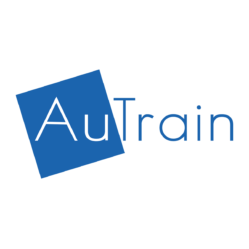09:30 – 10:15
Addressing common challenges for ASD; Making society ASD friendly at school
Activity: Think & Reflect 3.1 neurodiversity
#4. Introduce the content –autism spectrum and disorder – by reading the following text out load. In the end, ask for comments, doubts, or questions
Note: Present slides number 9 to 15
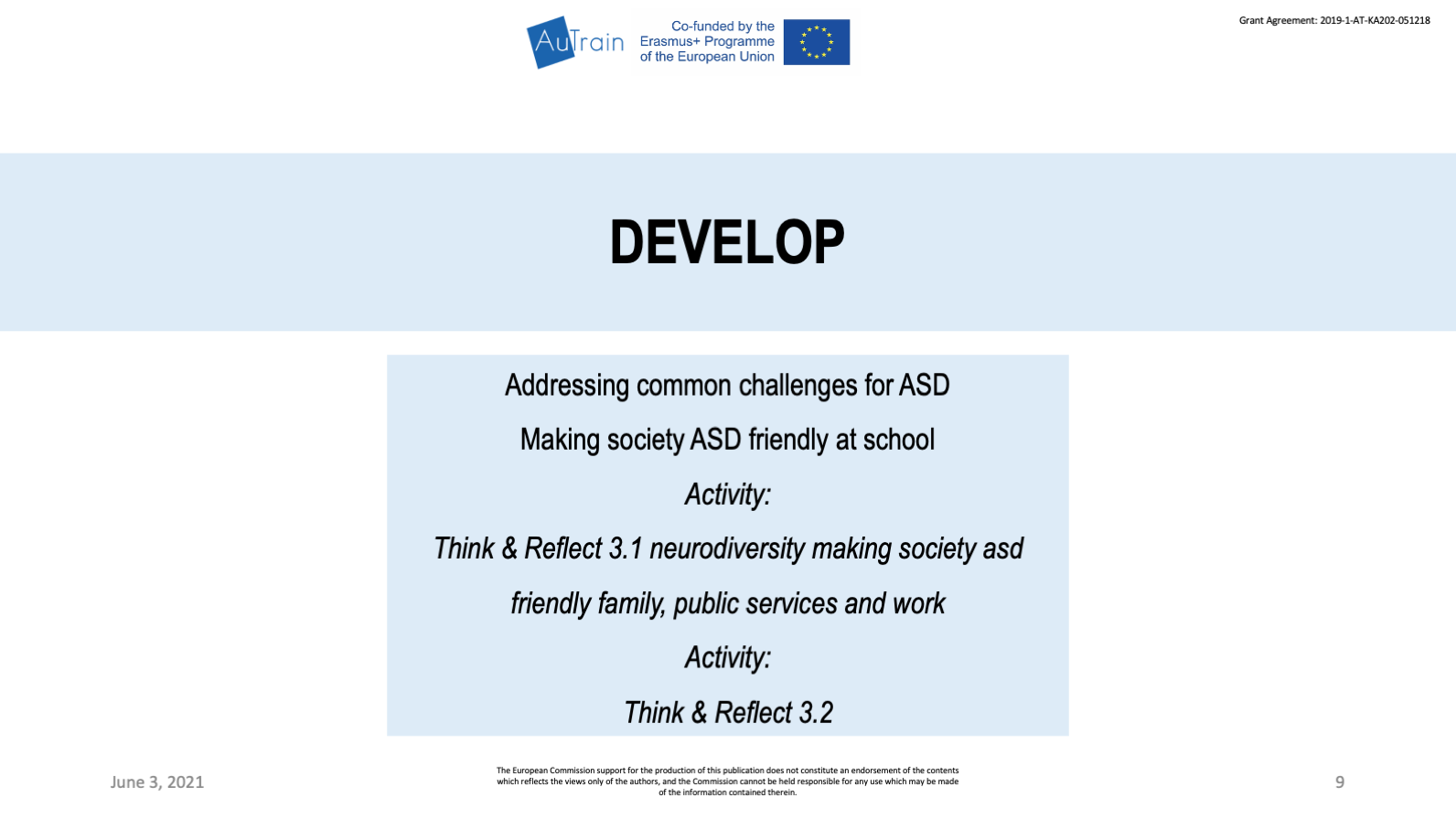
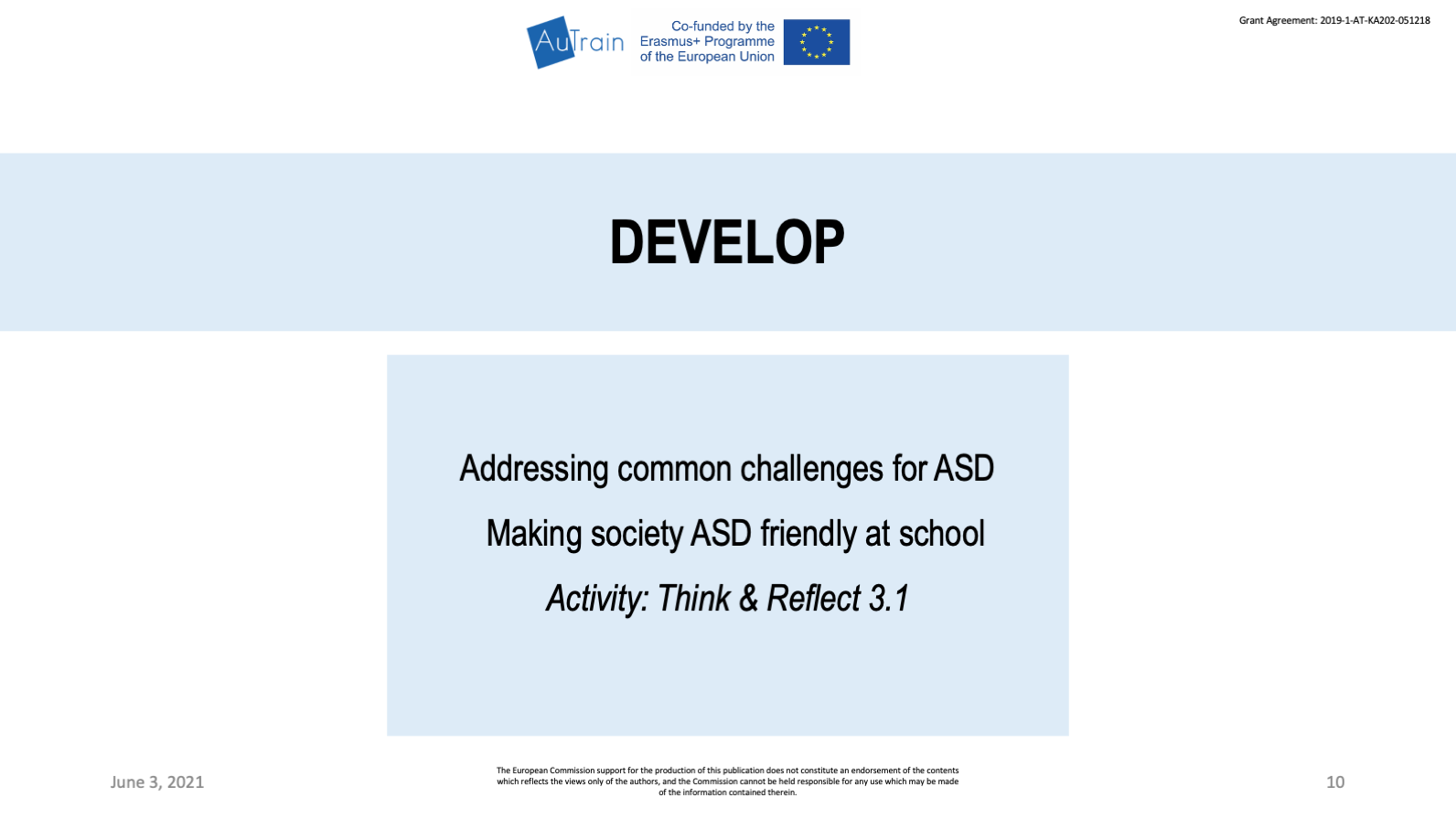
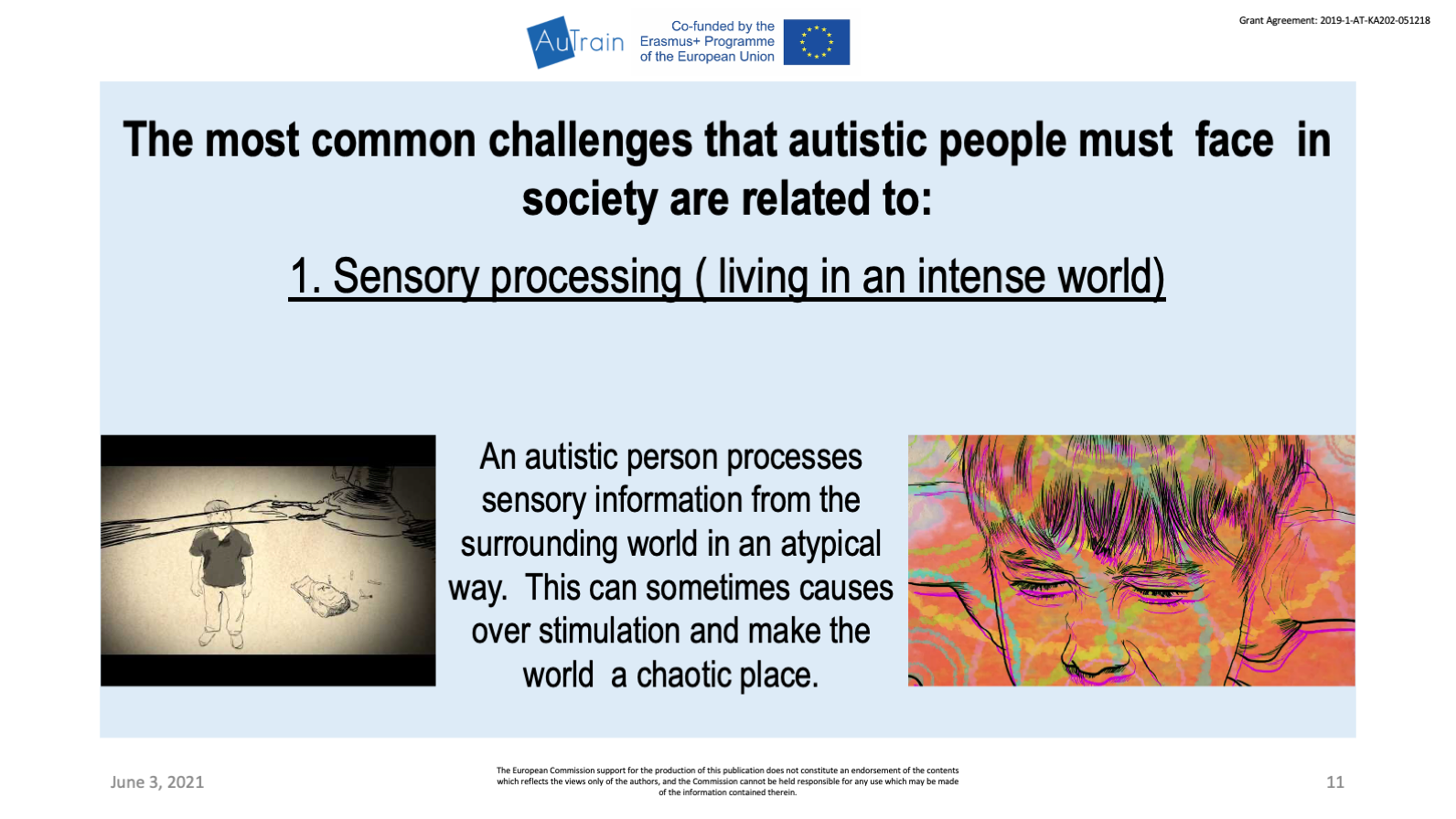
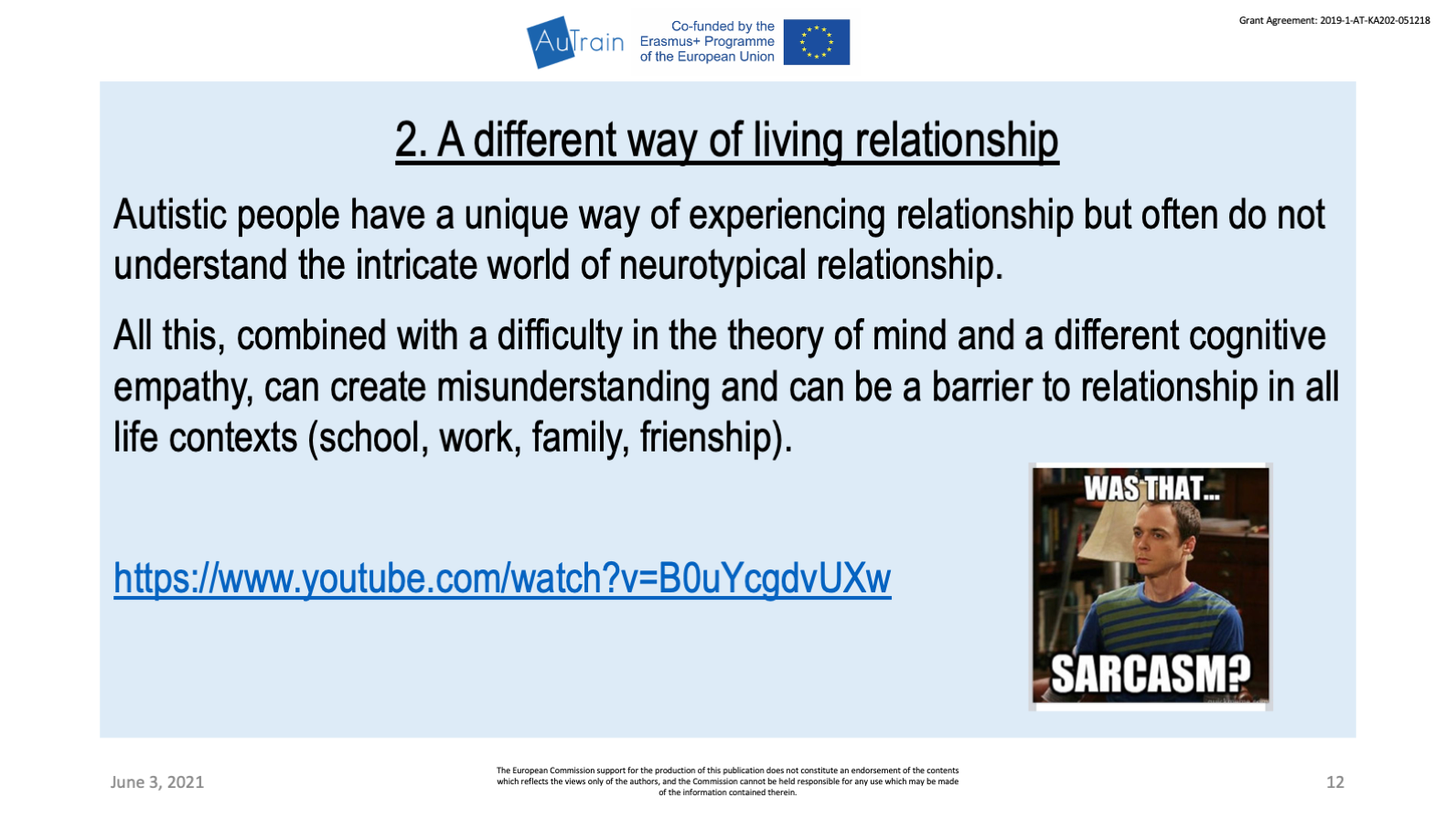
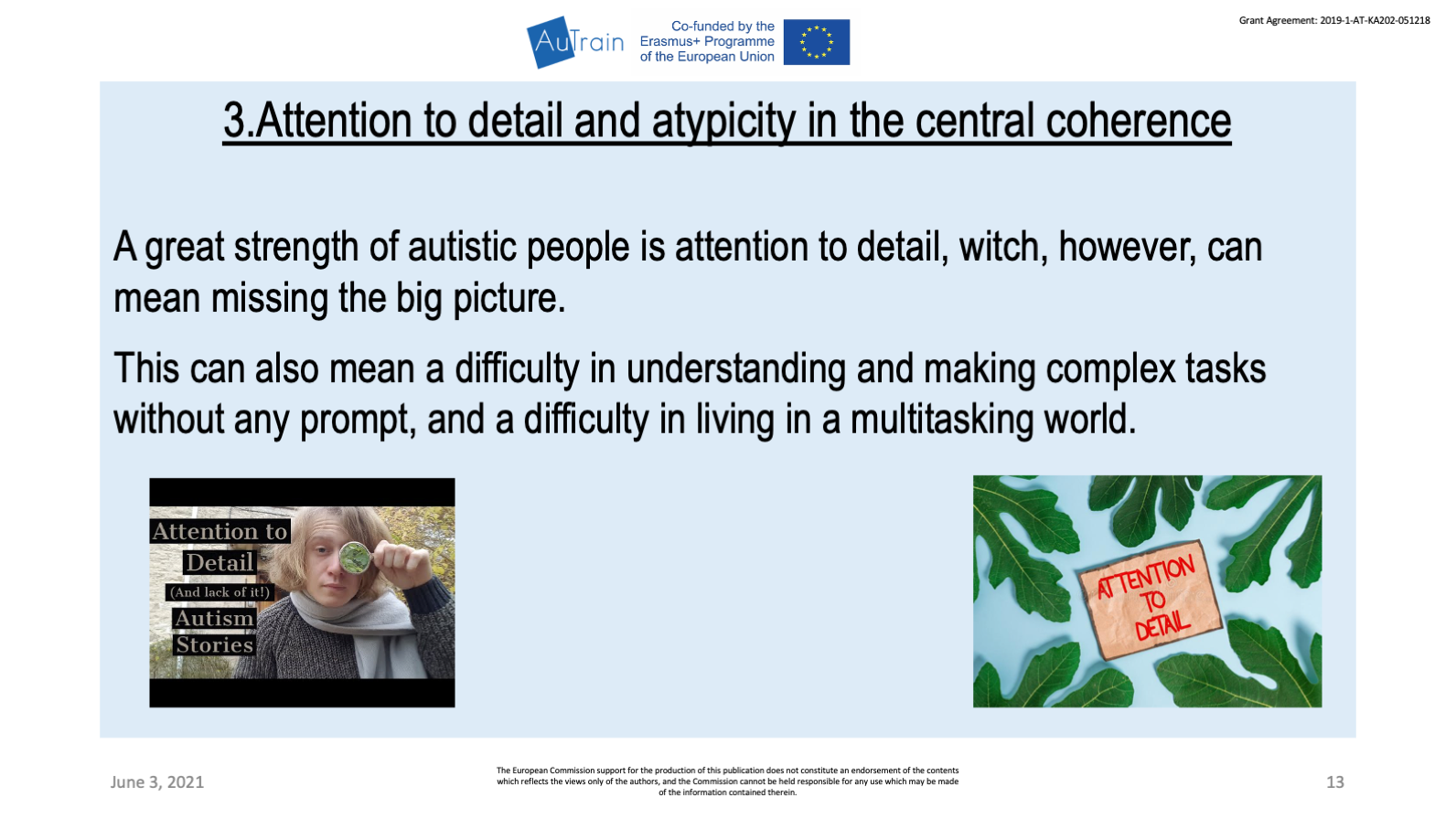
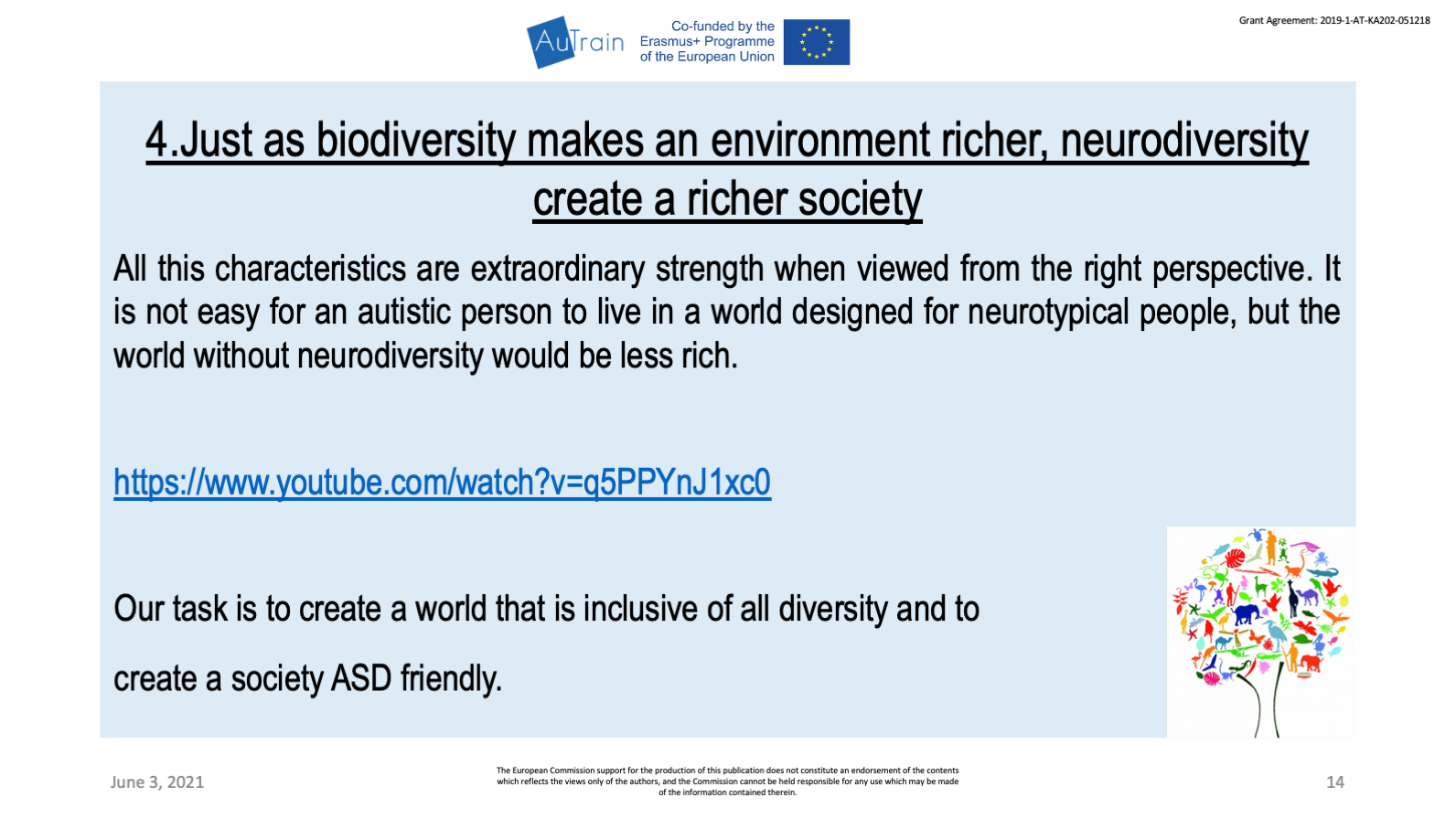
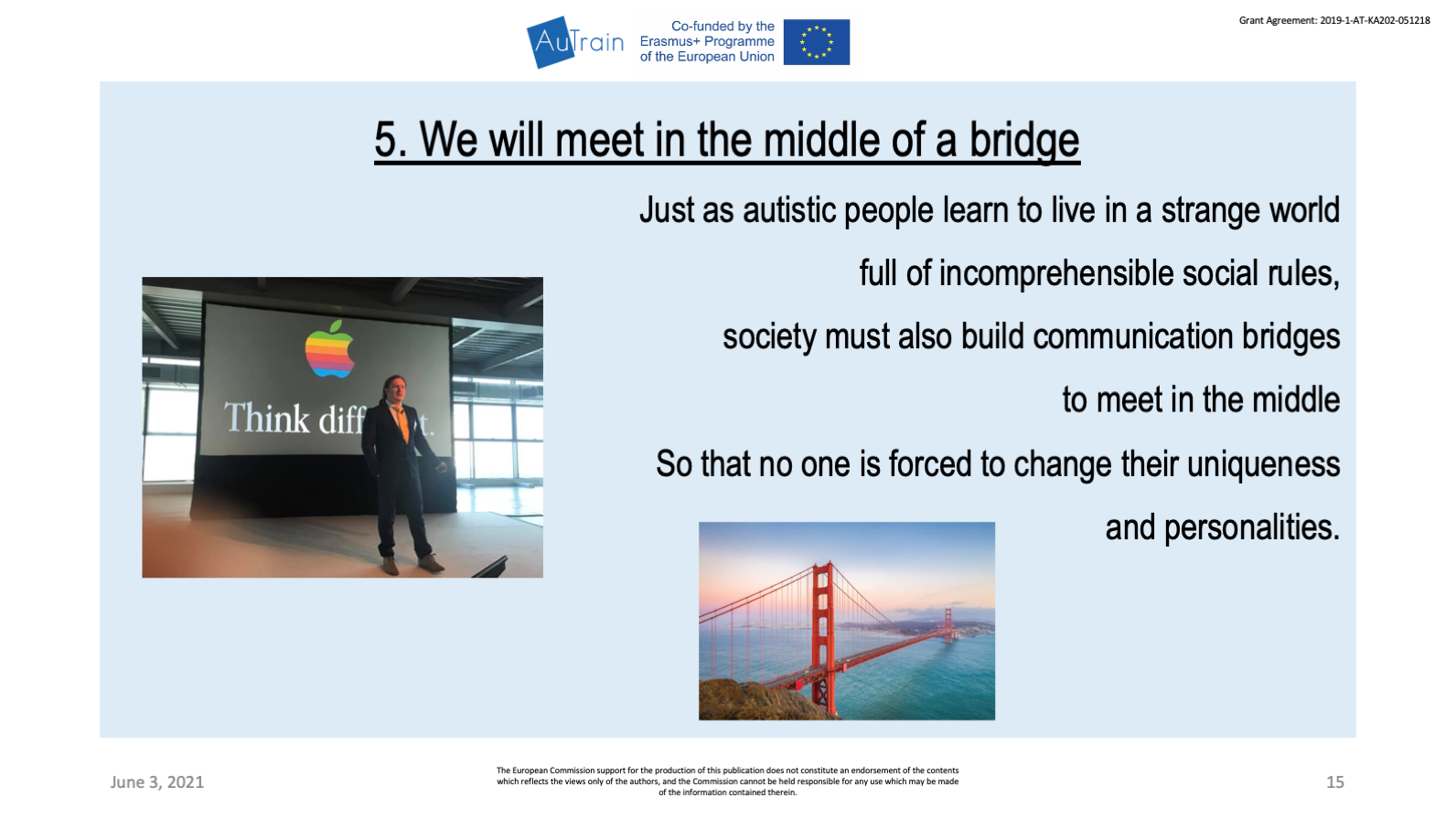
Ask for comments or doubts, or questions
Note: Present slides number 11 to 15 –The most common challenges that autistic people must face in society are related to:
a. Present slide number 11 with the first challenge:
(1) sensory processing (living in an intense world).
An autistic person processes sensory information from the surrounding world in an atypical way. This can sometimes cause over stimulation and make the world a chaotic place.
b. Show the video:
c. Present slide number 12 with the second challenge:
(2) A different way of living relationship
Autistic people have a unique way of experiencing relationship but often do not understand the intricate world of neurotypical relationship.
All this, combined with a difficulty in the theory of mind and a different cognitive empathy, can create misunderstanding and can be a barrier to relationship in all life contexts (school, work, family, friendship).
d. Show the video:
e. Present slide number 13 with the third challenge:
(3) Attention to detail and atypicity in the central coherence
A great strength of autistic people is attention to detail, witch, however, can mean missing the big picture.
This can also mean a difficulty in understanding and making complex tasks without any prompt, and a difficulty in living in a multitasking world.
f. Show the video:
g. Present slide number 14 with the fourth challenge:
(4) Just as biodiversity makes an environment richer, neurodiversity creates a richer society
All these characteristics are extraordinary strength when viewed from the right perspective. It is not easy for an autistic person to live in a world designed for neurotypical people, but the world without neurodiversity would be less rich.
Our task is to create a world that is inclusive of all diversity and to create a society ASD friendly.
h. Show the video:
Present slide number 15 with the fifth challenge:
(5) We will meet in the middle of a bridge
Just as autistic people learn to live in a strange world full of incomprehensible social rules, society must also build communication bridges to meet in the middle. So that no one is forced to change their uniqueness and personalities.
In the end ask for comments, doubts, or questions
#5. Introduce and develop the Activity: Think & Reflect 3.1 neurodiversity
Note: Present slides number 16 (the image has an automatic link to the video) while you are introducing the activity and showing the video; while participants are developing the activity project slide number 17
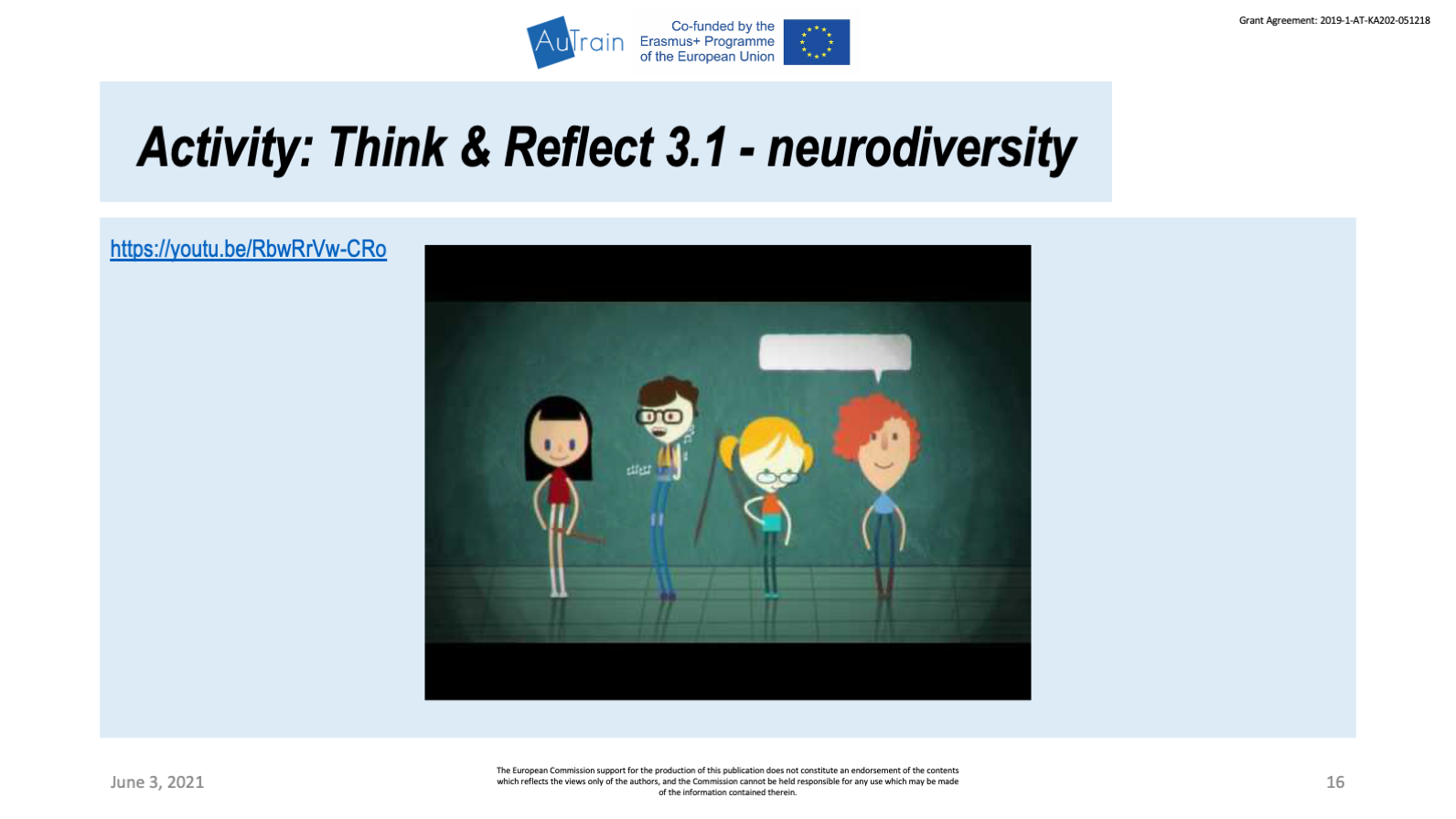
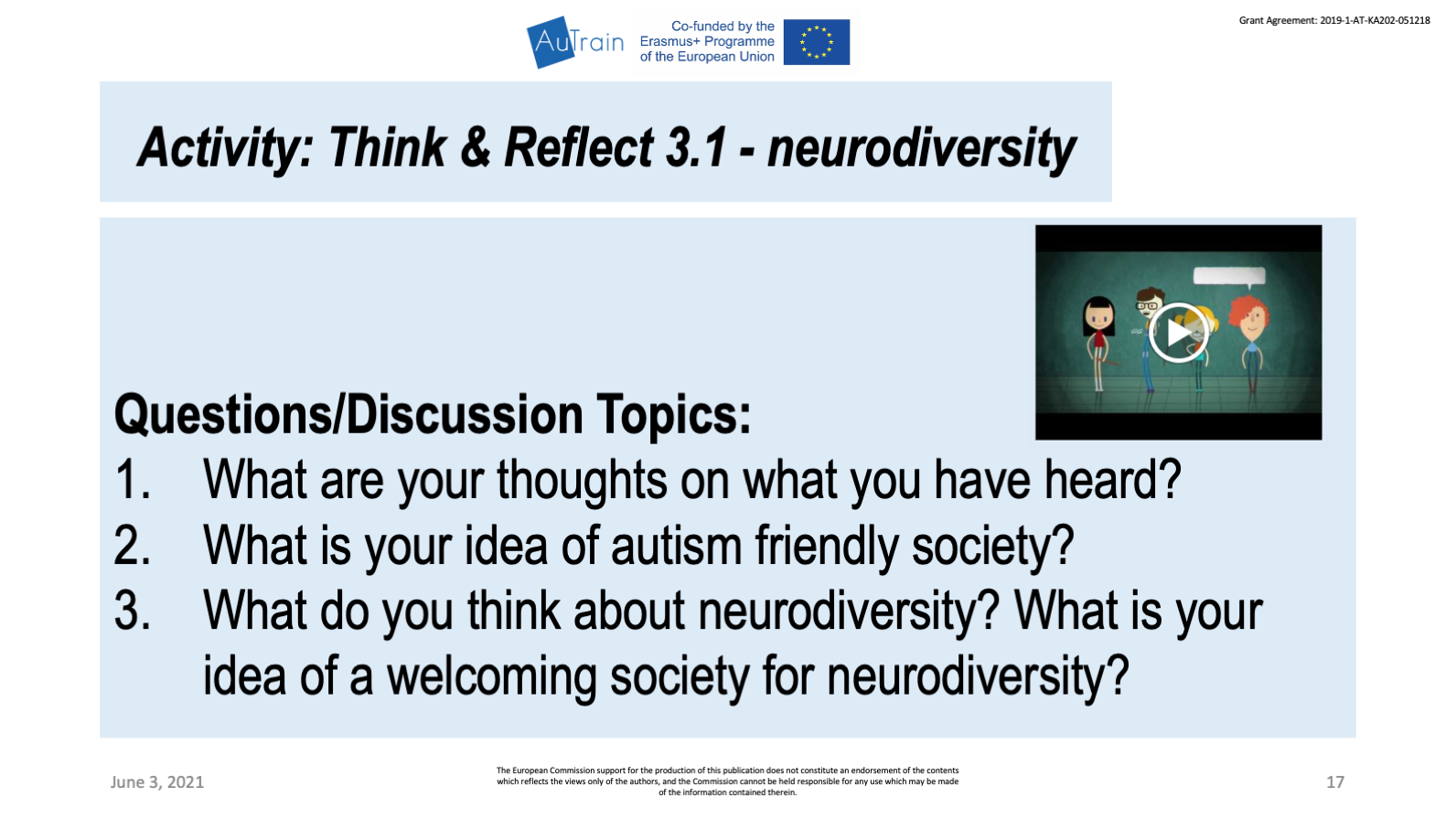
Introduce the aim of the activity
We will watch a video and after that we will reflect about the topic- amazing things happen and relate it to the contexts of this module. We will be organized first in small groups of 3 /4 participants and after the discussion we will open to all group.
Introduce the material: Pass out the Worksheet Think & Reflect and be ready to show the video (use the link in the slide or the following link).
Procedures
a. Form small groups of 3 /4 participants. Let participants form the groups, which can also help participants get to know each other better, but feel free to find other way; keep your options fluid and flexible.
b. Ask participants to be prepared to discuss the questions presented on the worksheet after the video be watched. Read the questions and ask for doubts or comments.
c. Inform participants that they will discuss it within their small group and after that they will report their ideas to the class. They should decide who will present the group ideas and discussion.
d. Show the video. To add subtitles with translation:
1. In the player, select Settings.
2. Select Subtitles/CC – Add subtitles.
3. Select Automatic translation – choose your language.
e. While participants are in small groups, you should act as a facilitator, moving from group to group. Doing so allows you to ensure that all of its members are actively participating and learning.
f. Participants share their best ideas with the class. Connect these ideas to the ones presented at the brainstorming activity.
Questions/Discussion Topics:
- What are your thoughts on what you have heard?
- What is your idea of autism friendly society?
- What do you think about neurodiversity?
- What is your idea of a welcoming society for neurodiversity?
Adaptation for online session:
After watching the video in the main meeting room, send groups to breakout rooms, and you move from room to room. Share the worksheet using the chat function.
#6. Describe to make a autism friendly society. Start talk about school
Note: Present slides number 18 to 25
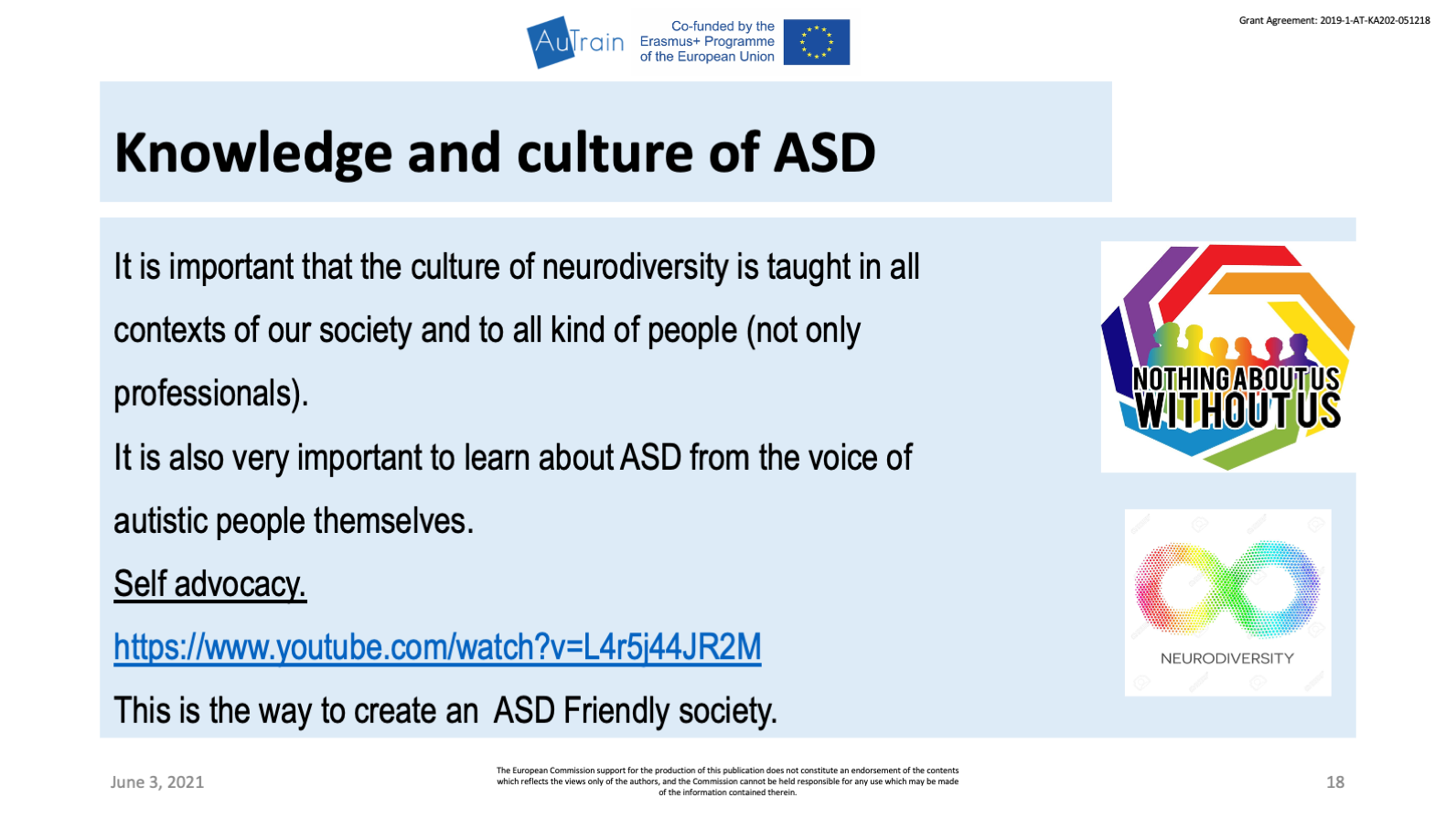
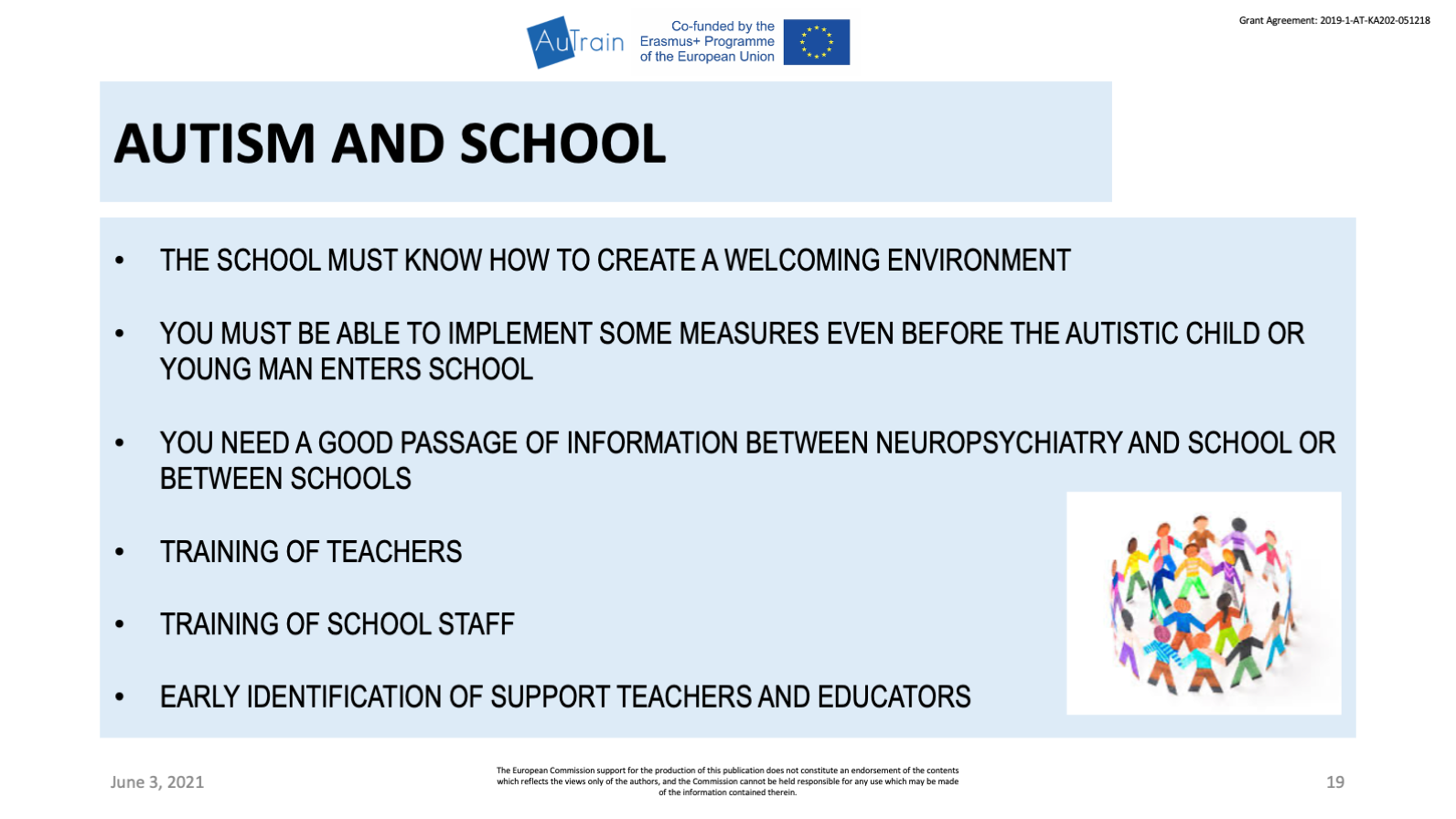
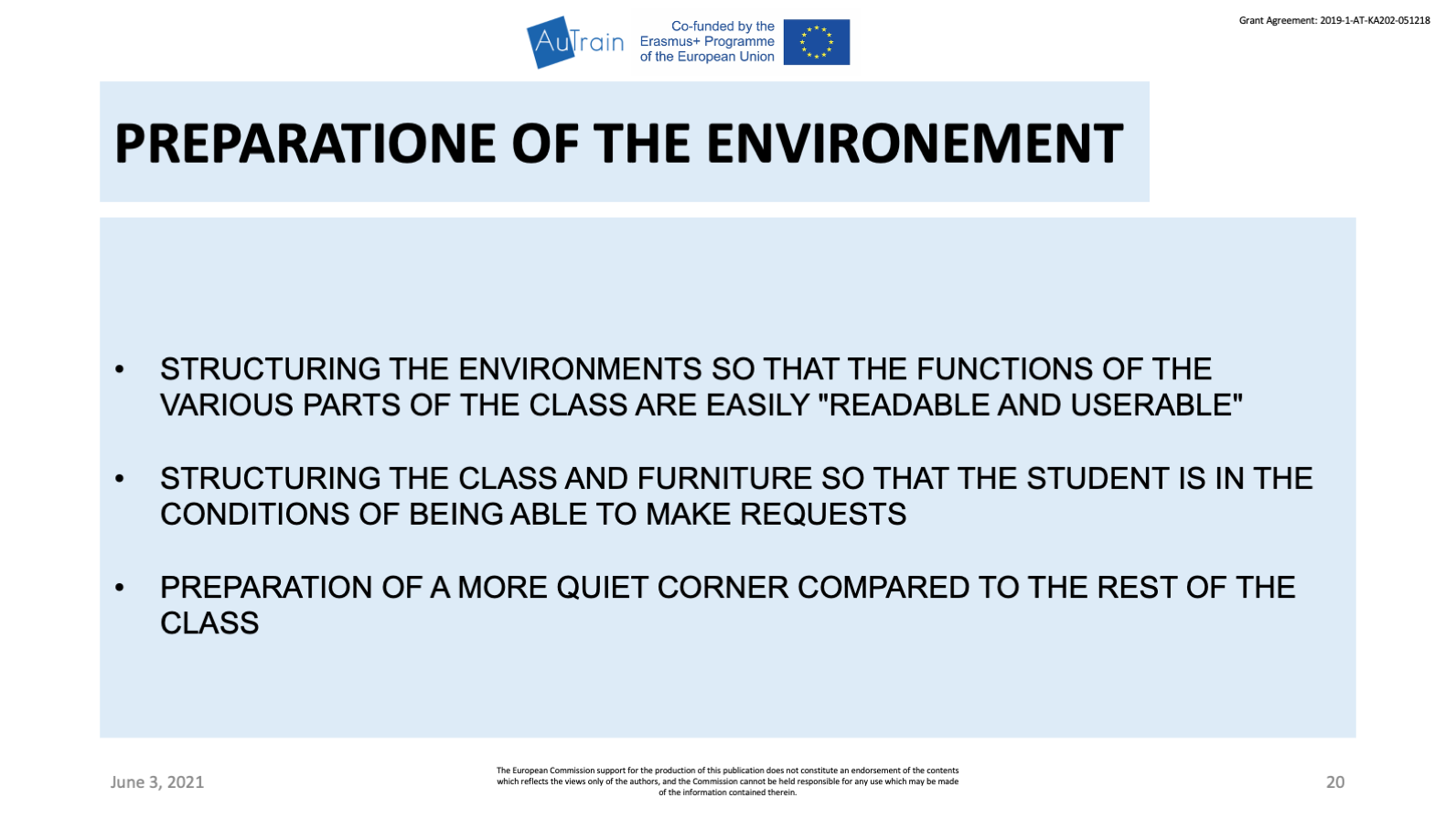
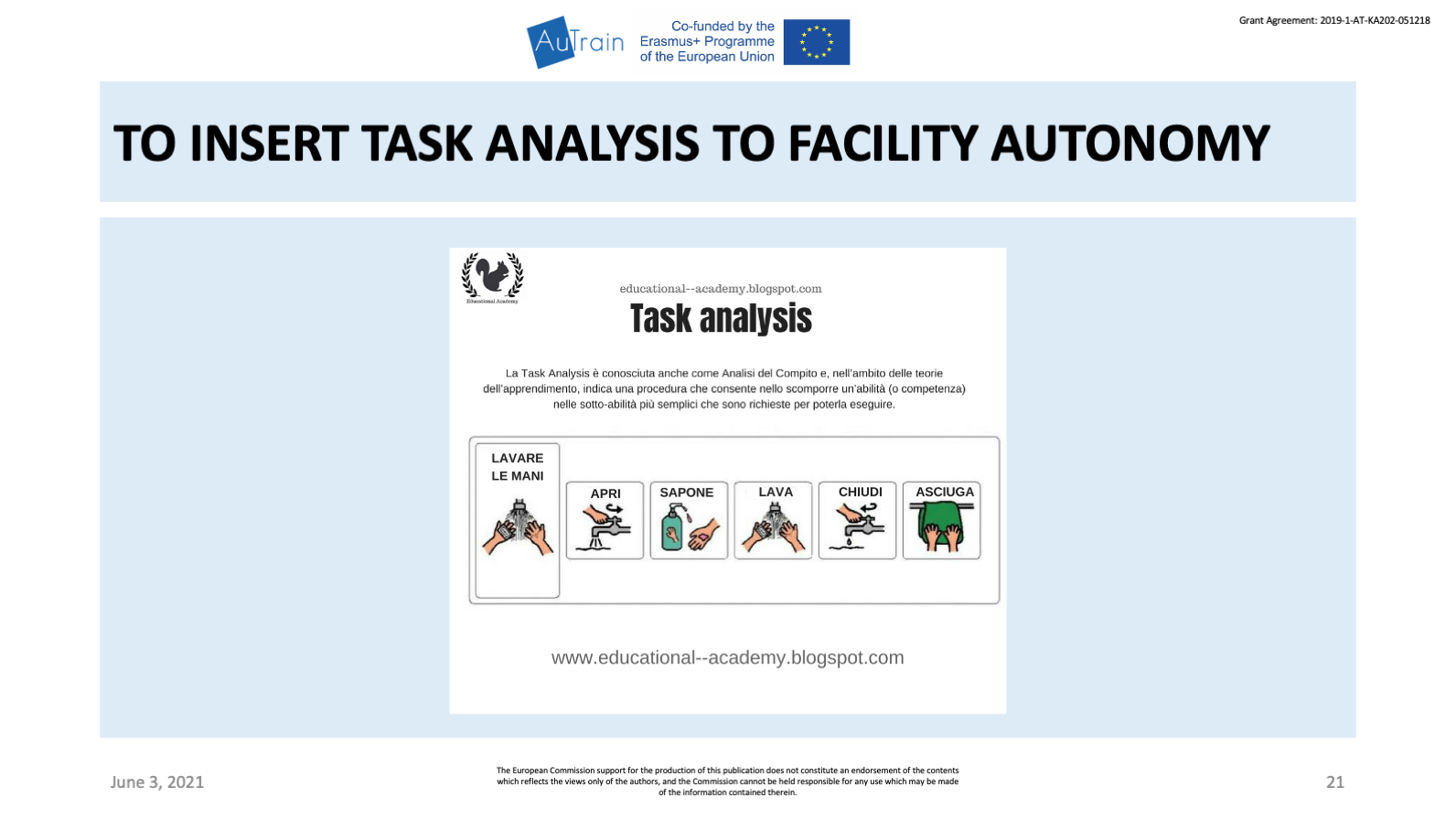
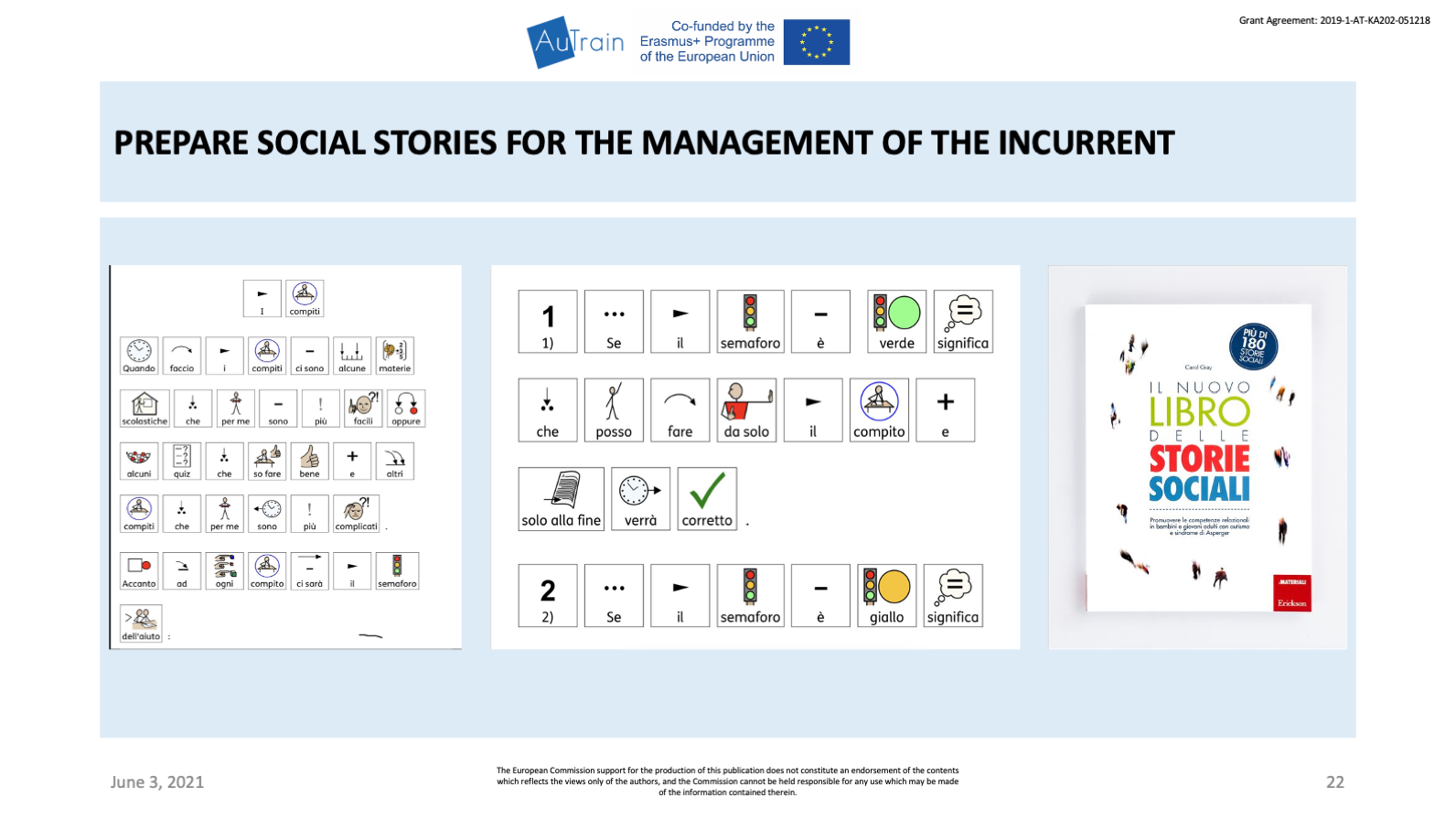
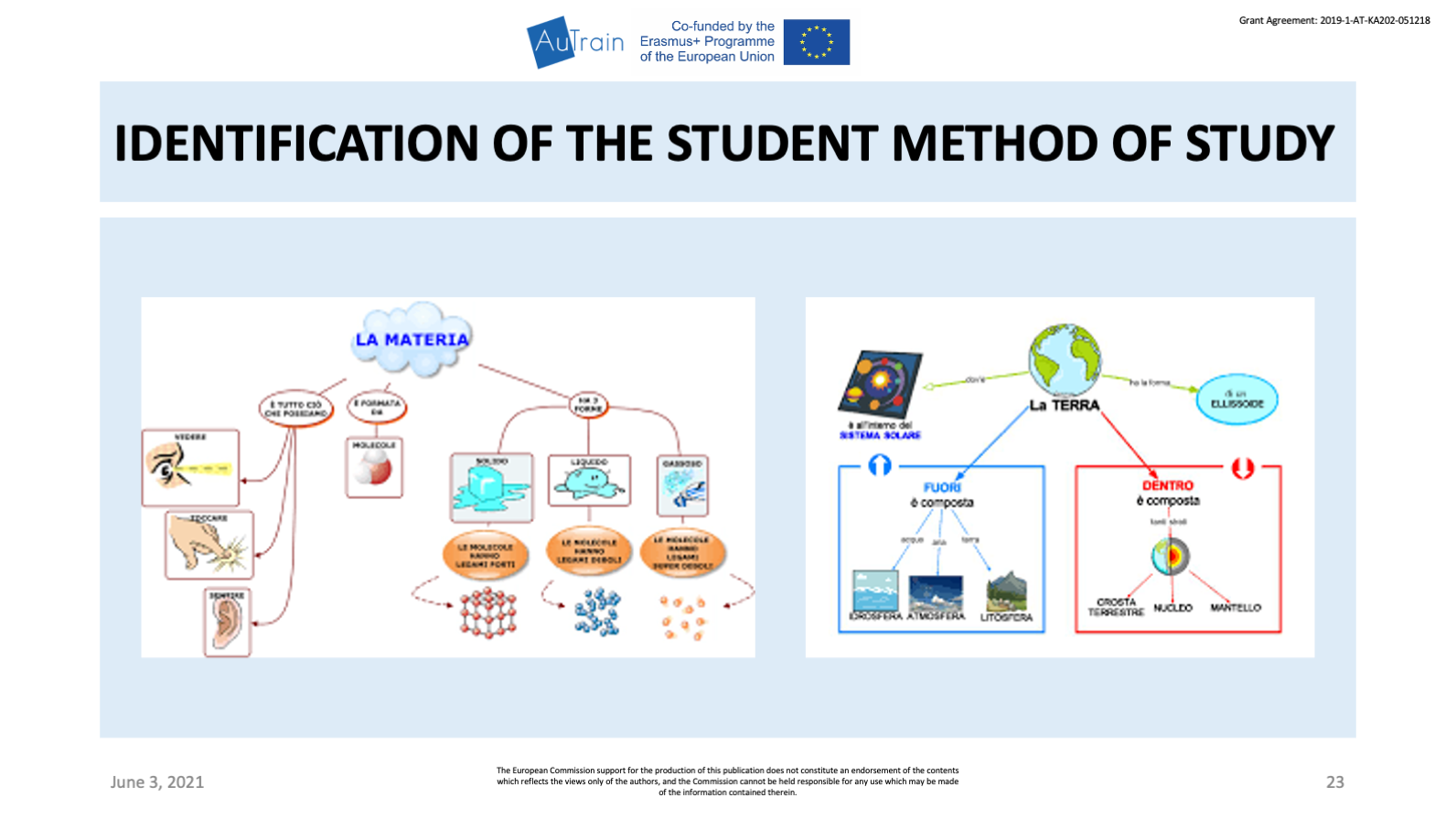
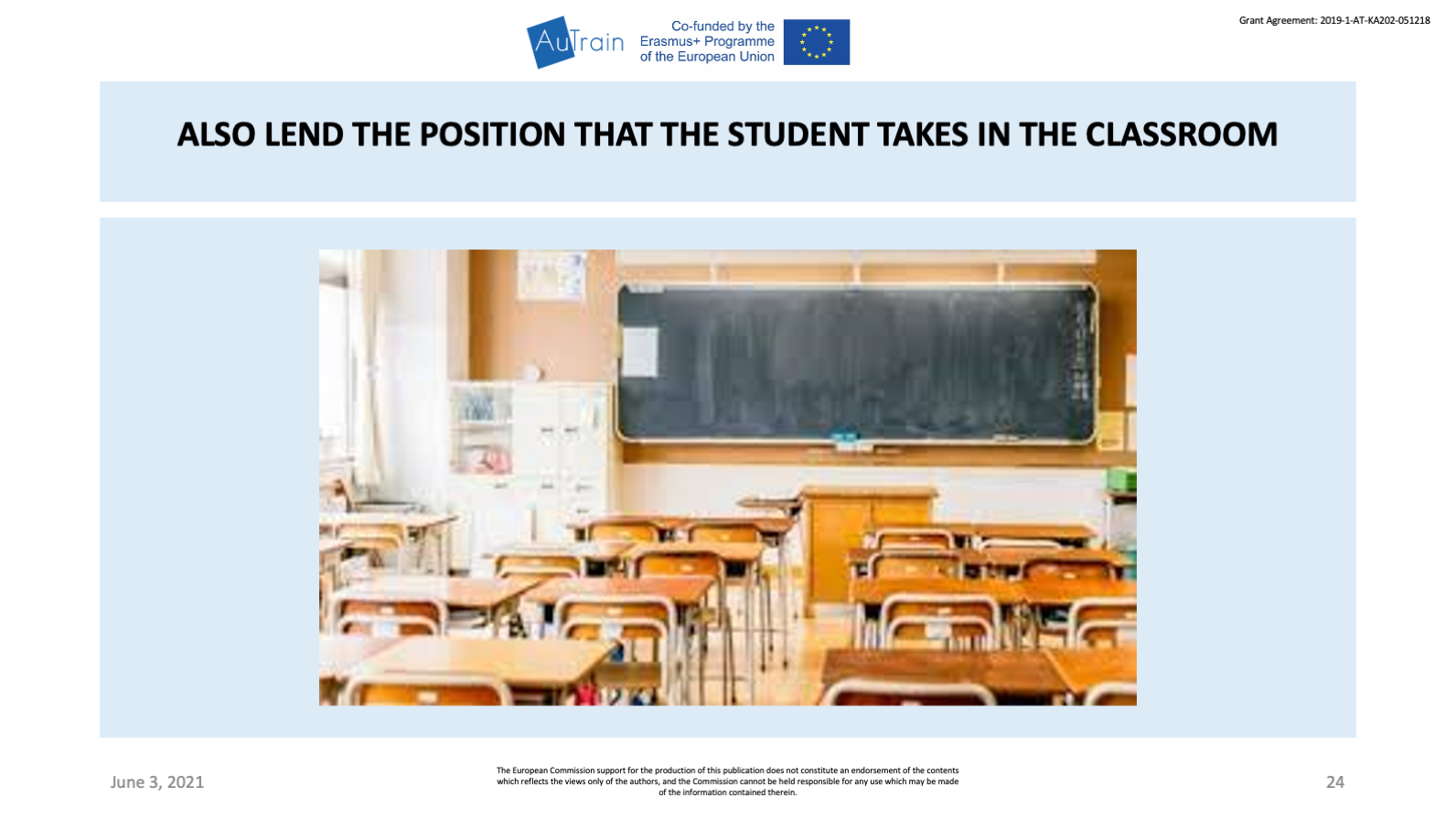
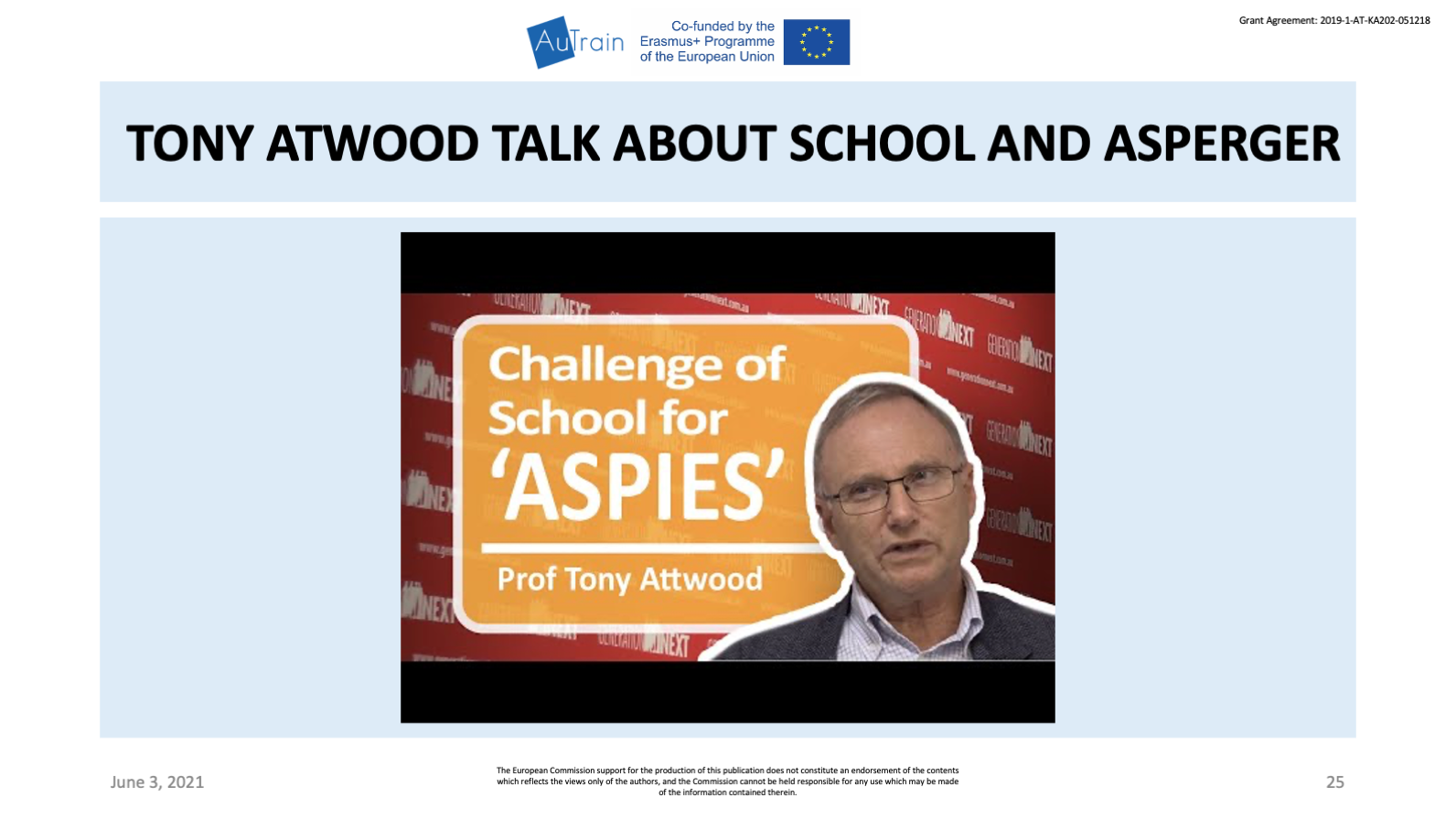
Present slide number 18 and then show the video:
Present slide number 19 to 24, reading out load the content.
Show the video at slide number 25 and then show arasaac softwar o simcaa
BREAK TIME
10:15 – 10:45
#7. Introduce the content – making autism friendly society in a public service, family and work – by reading the following text out load. In the end ask for comments, doubts, or questions
Note: Present slides number 27 to 43
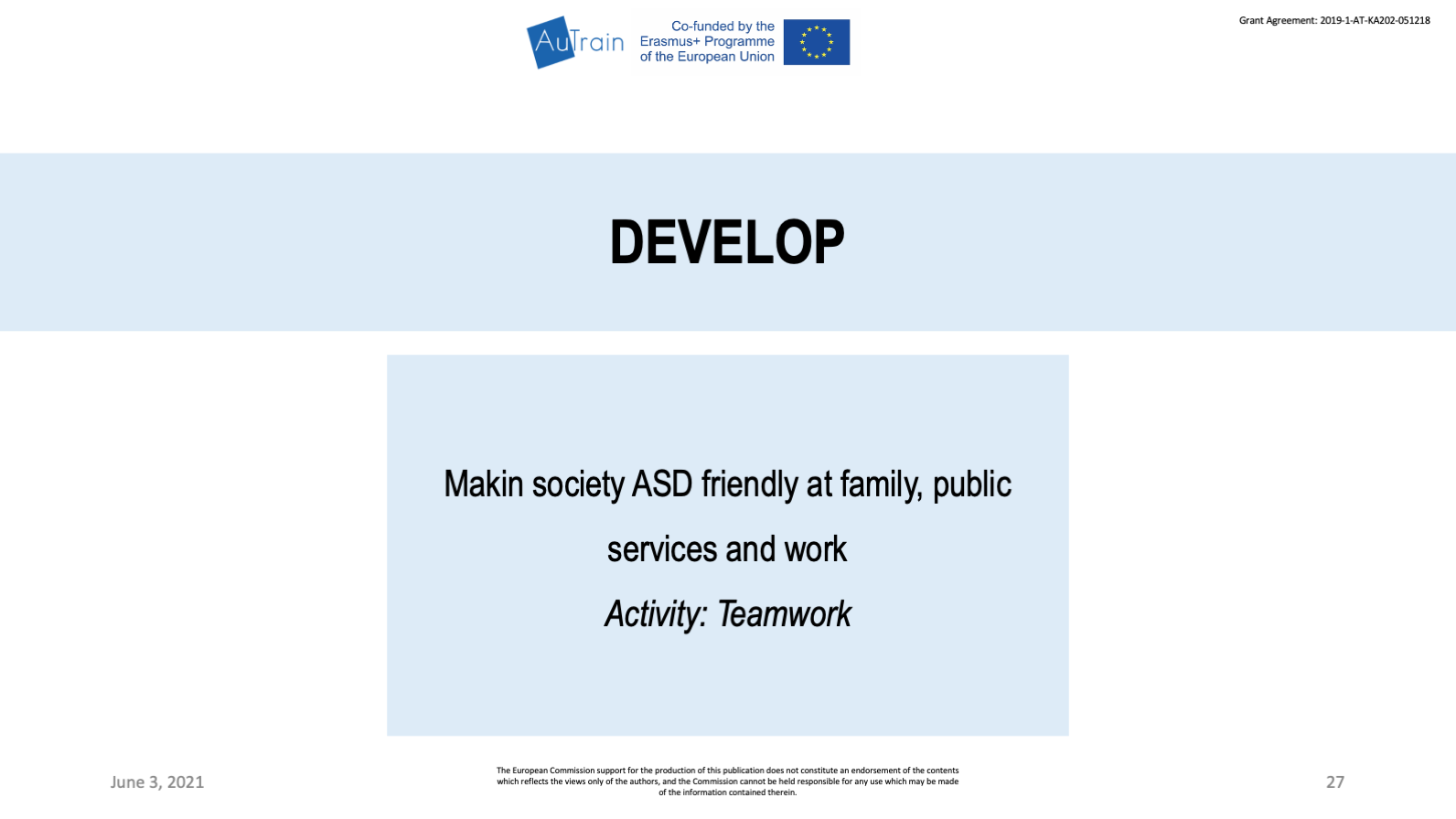

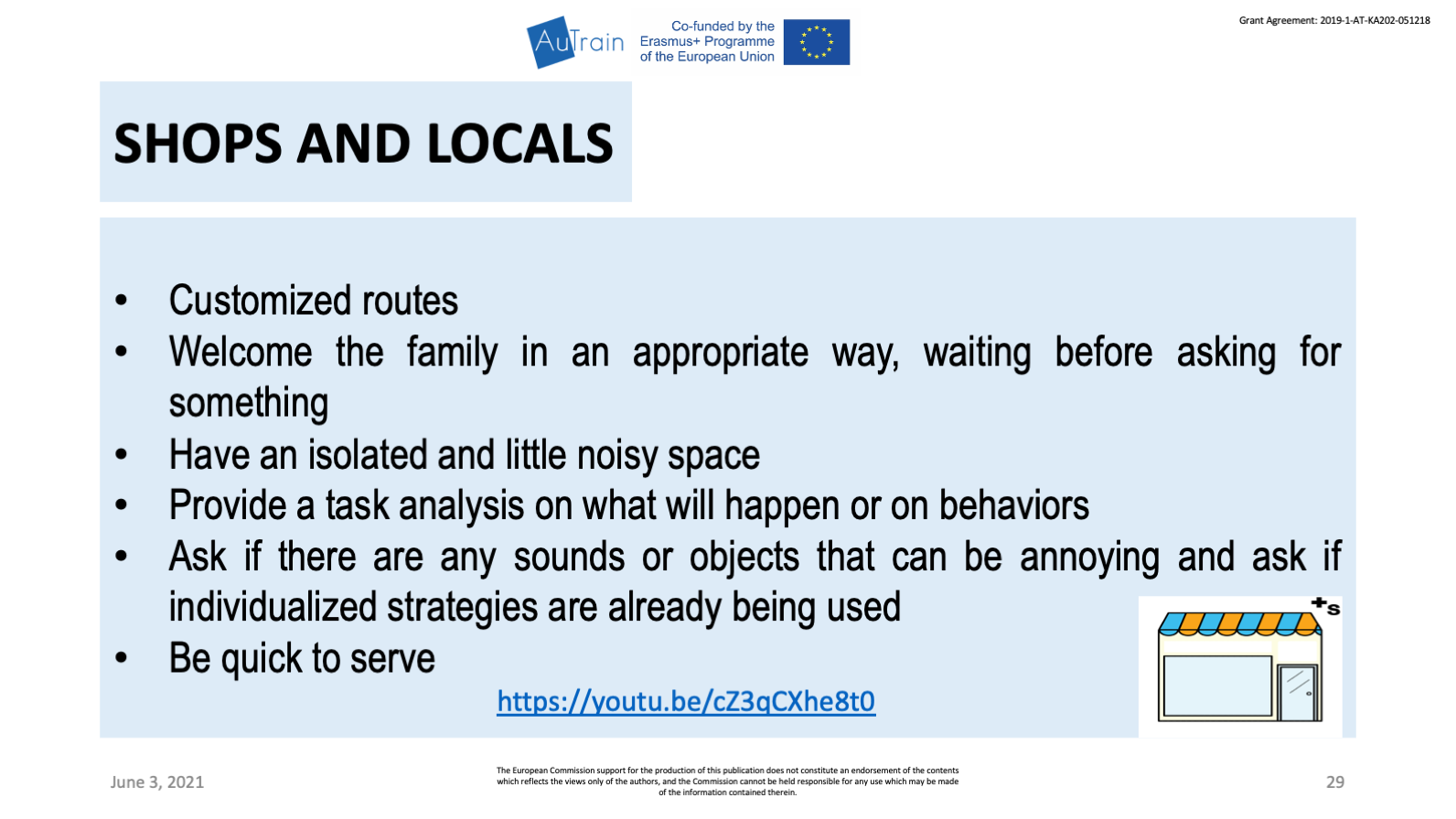
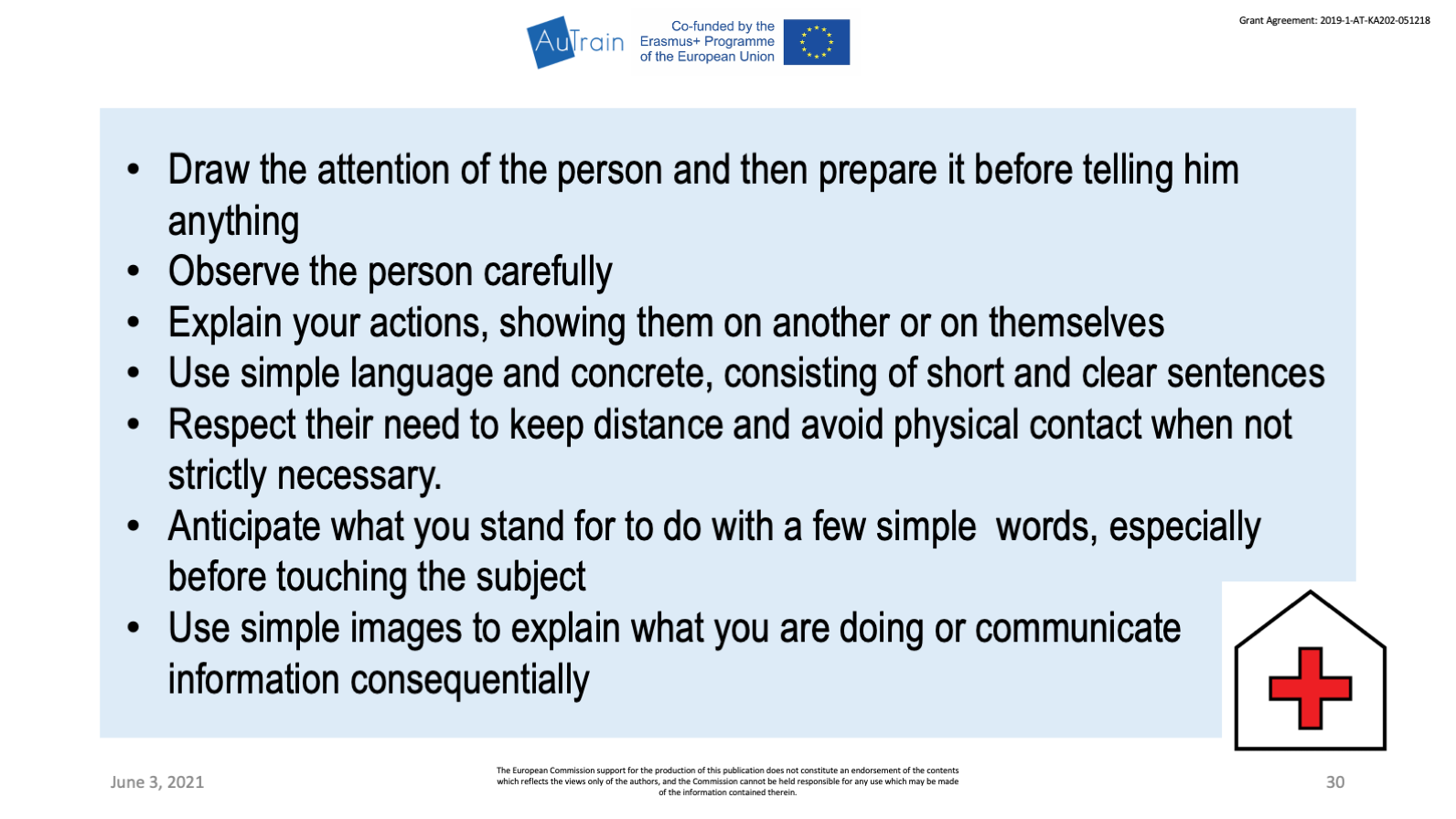
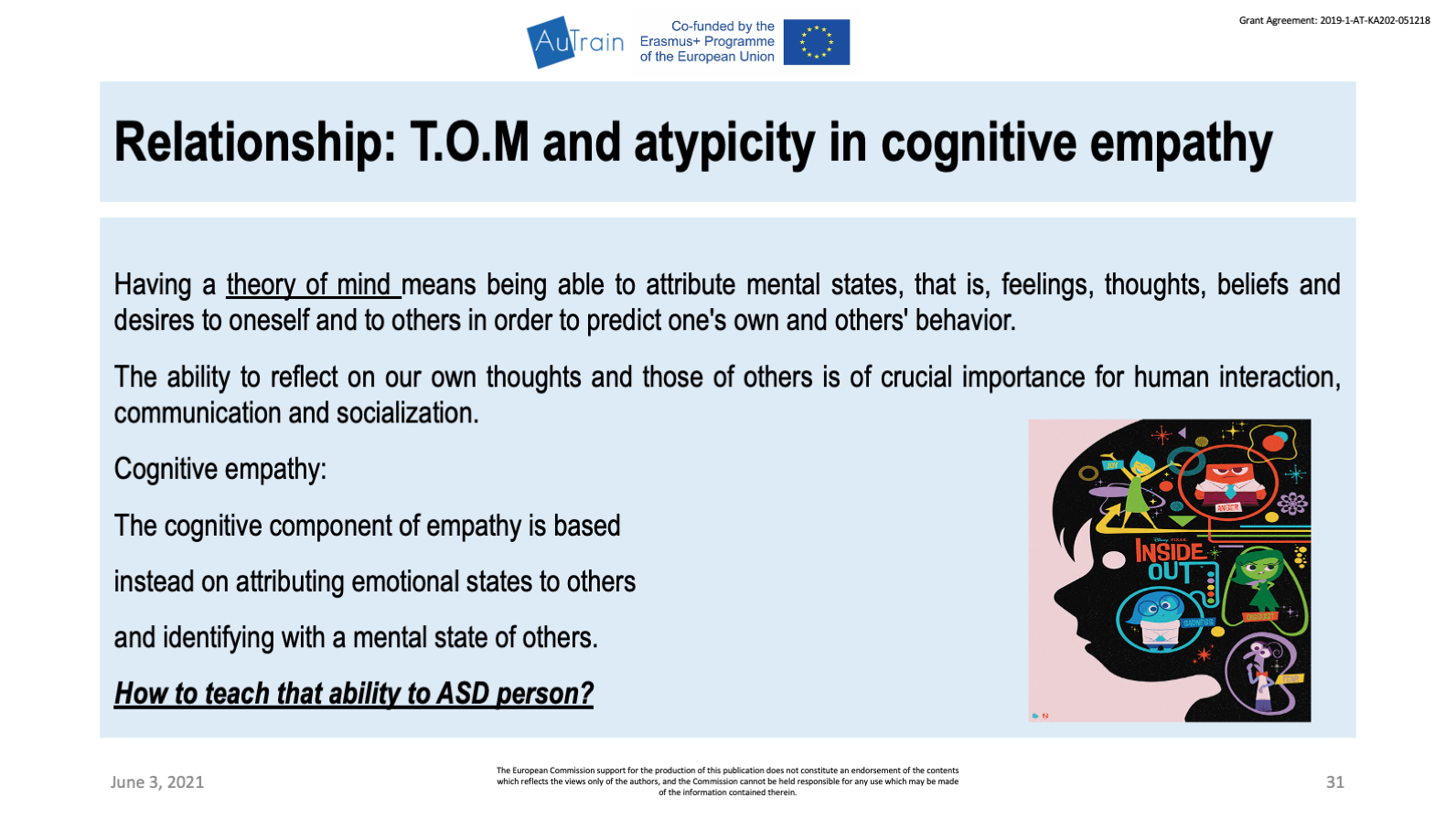
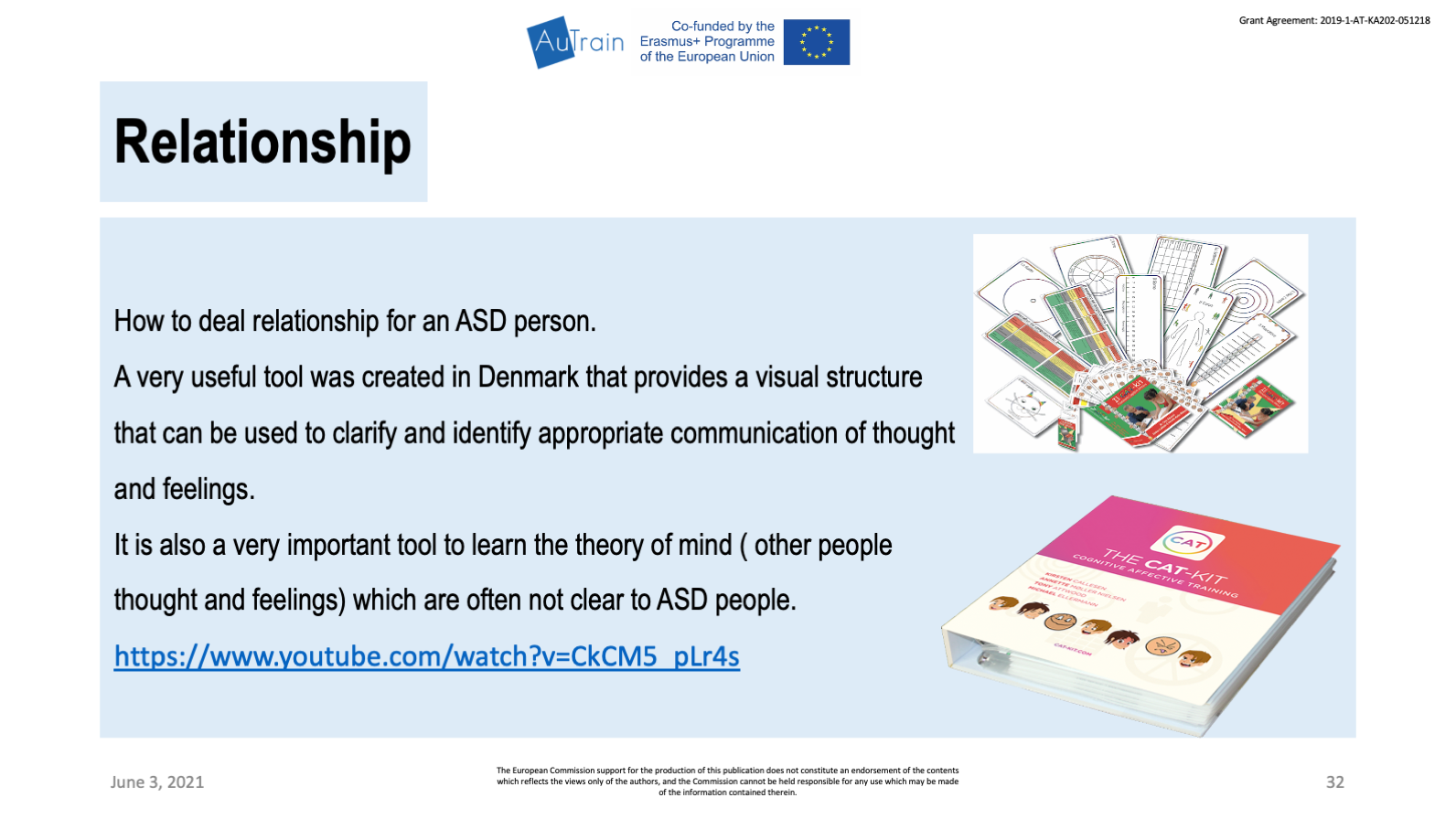
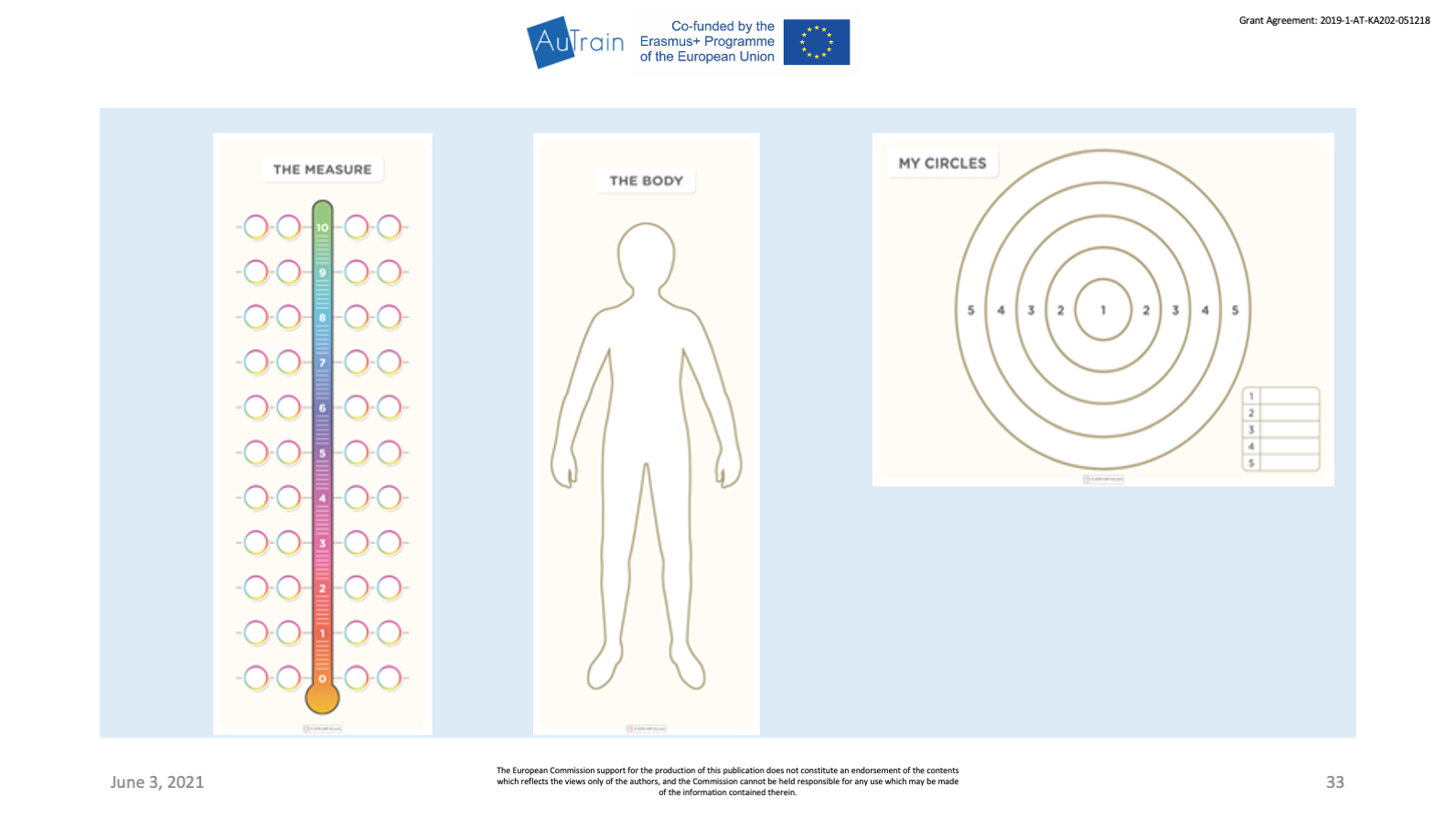
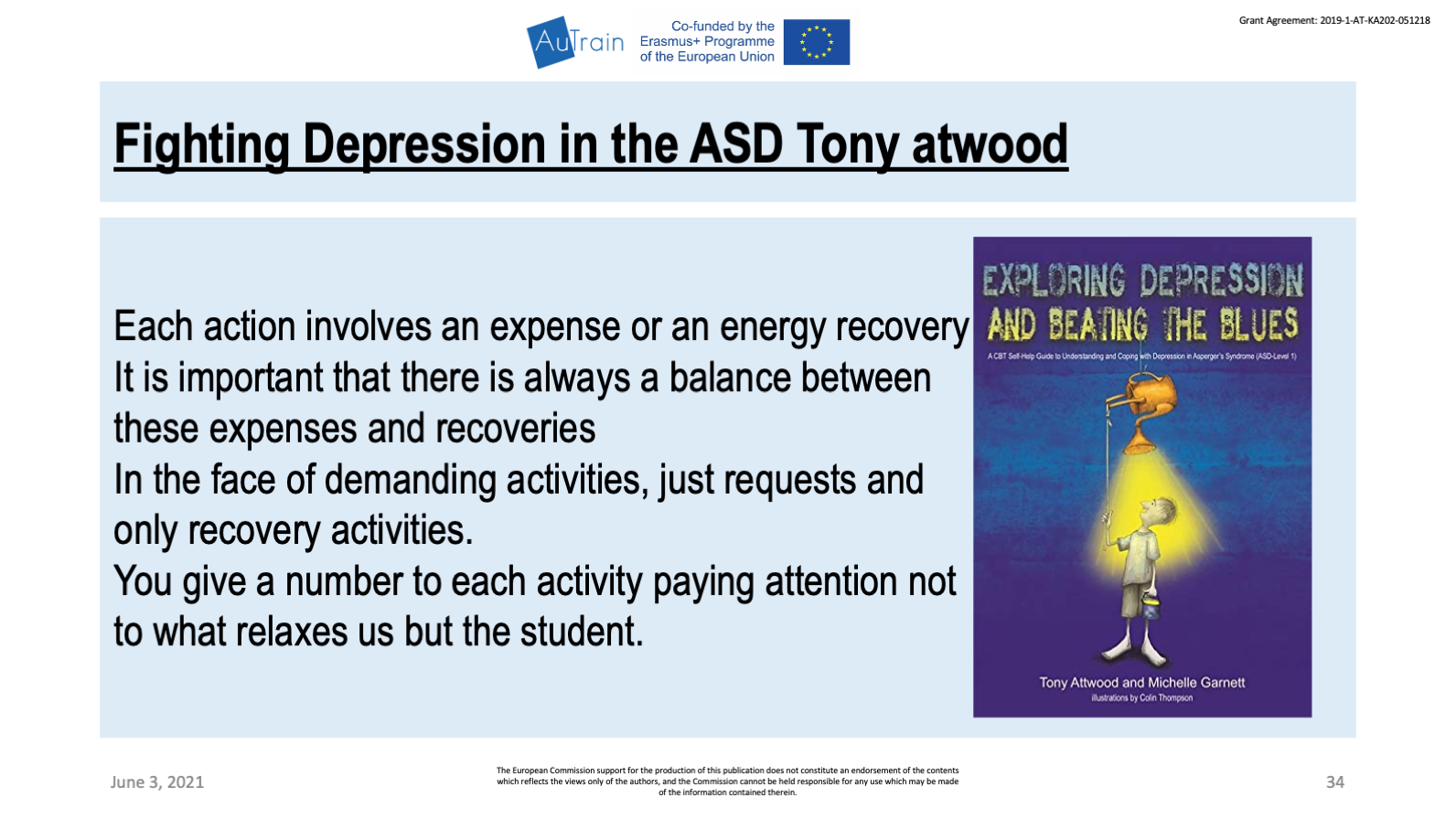
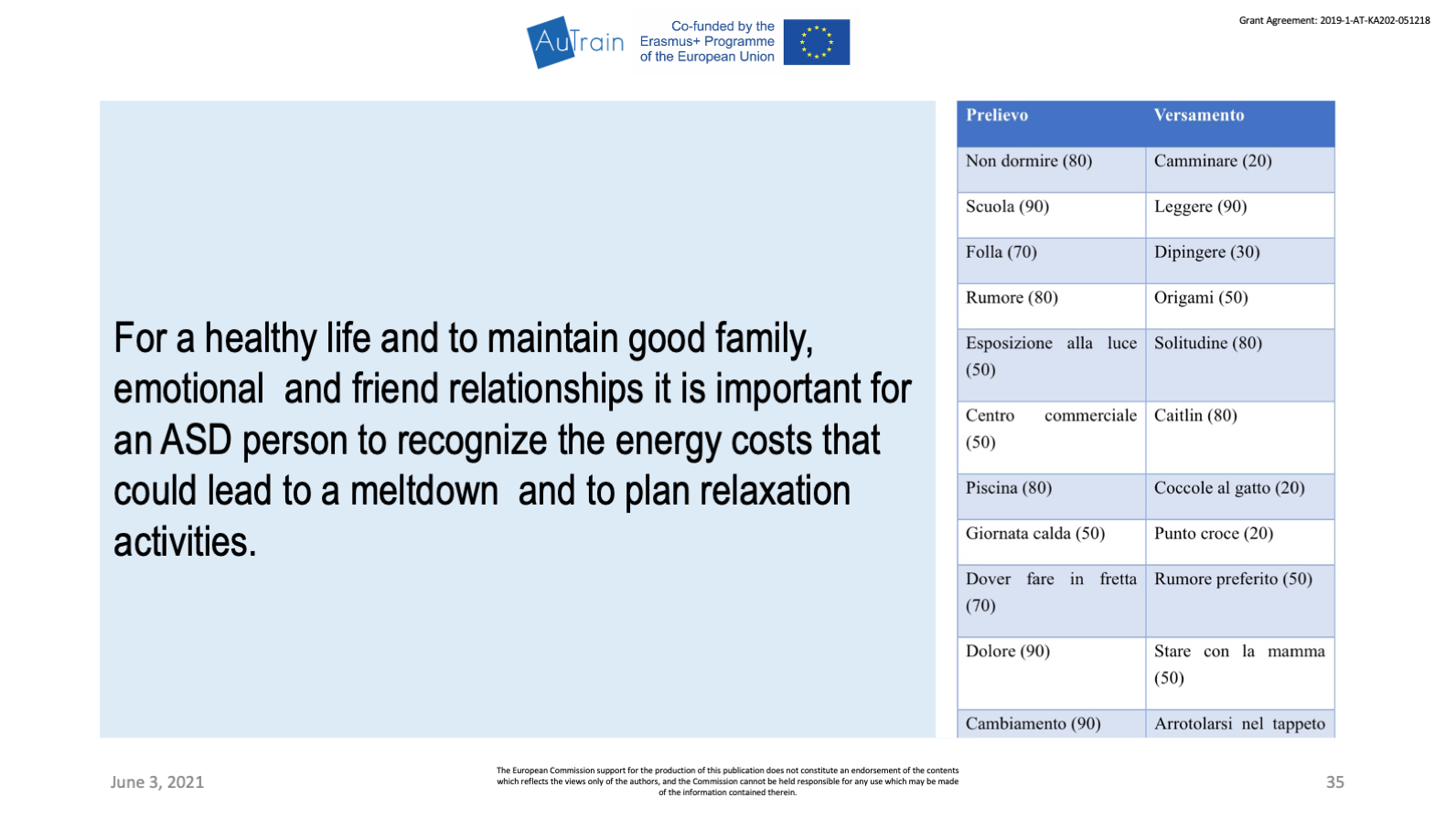
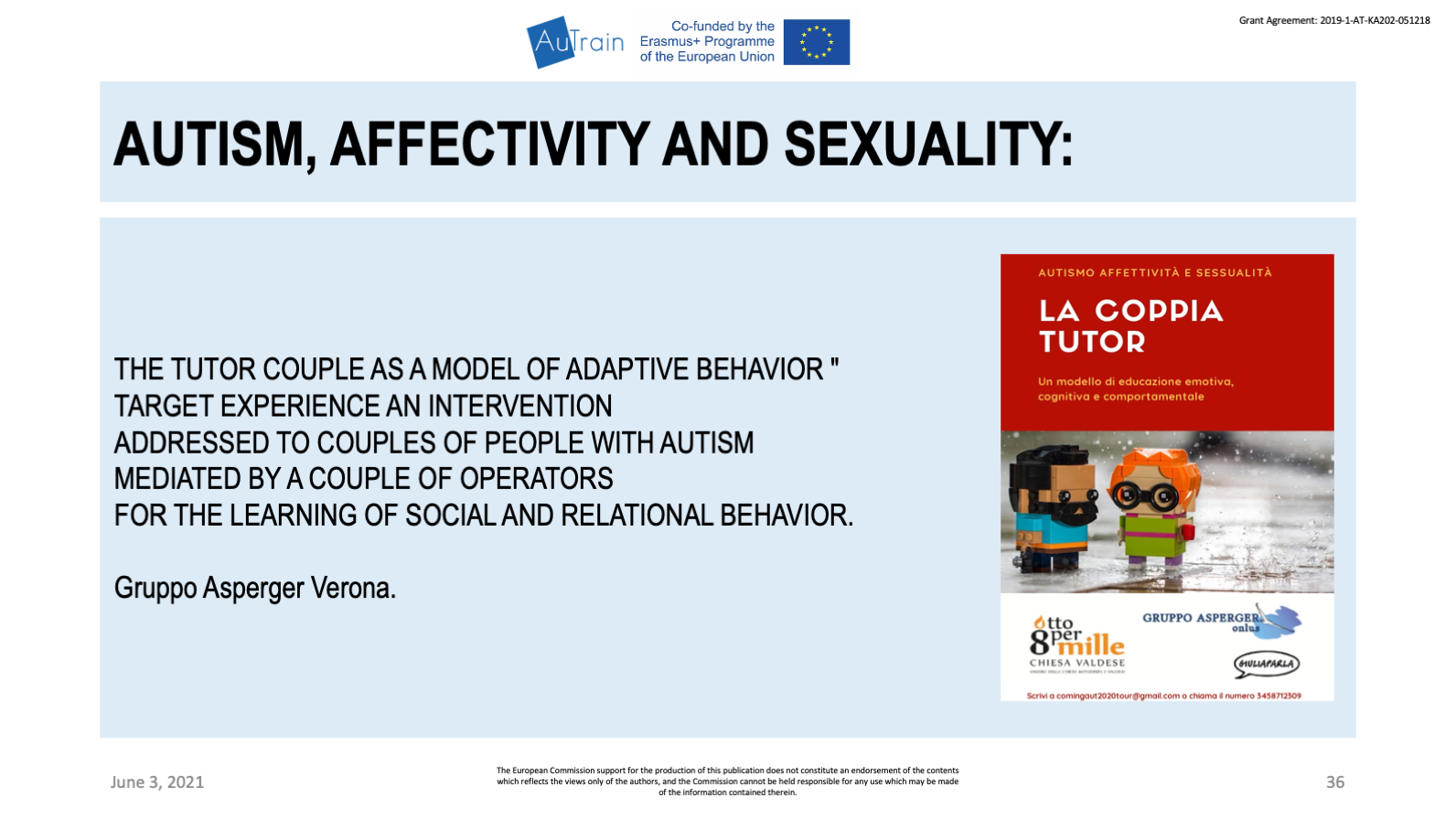
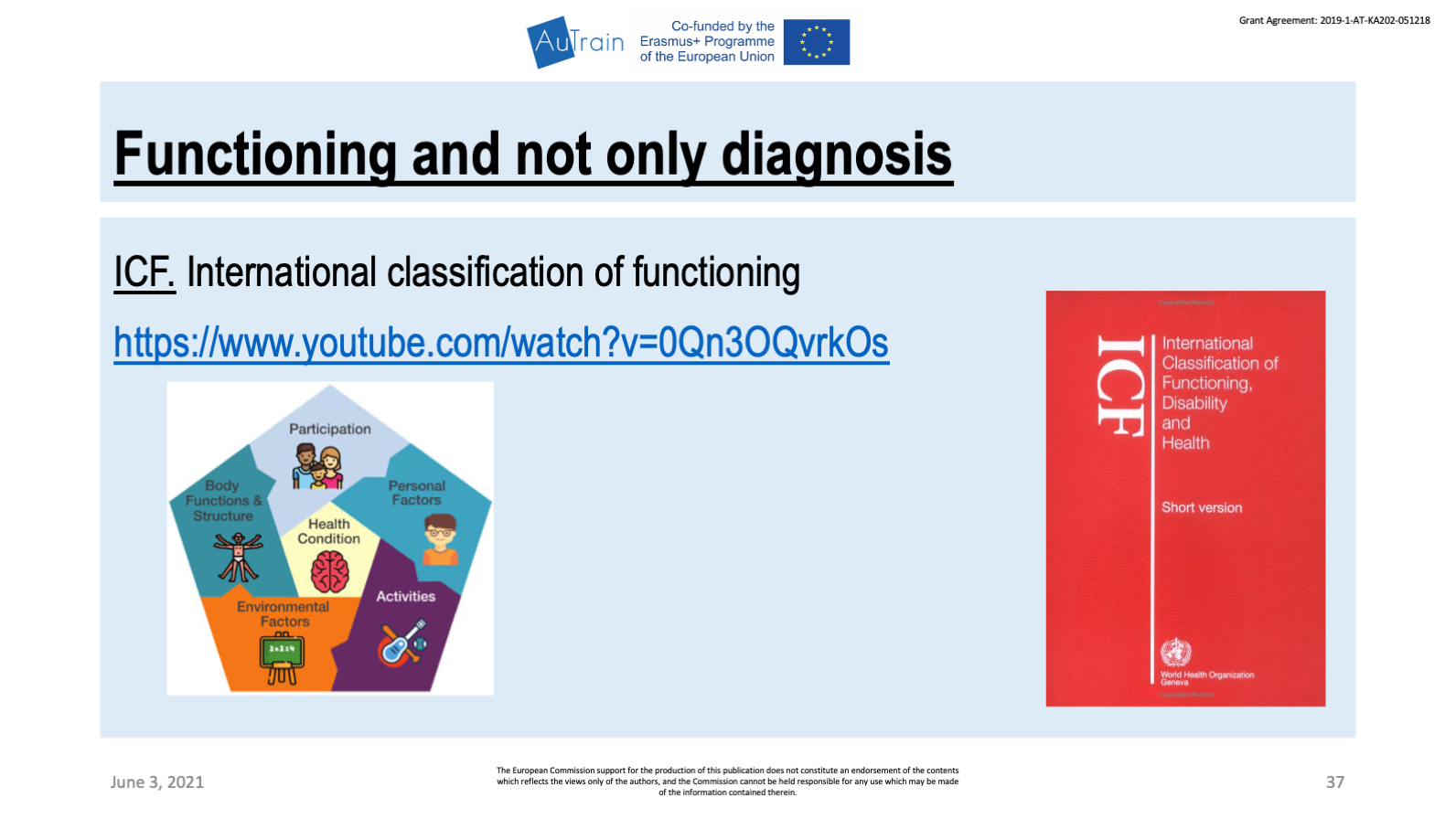
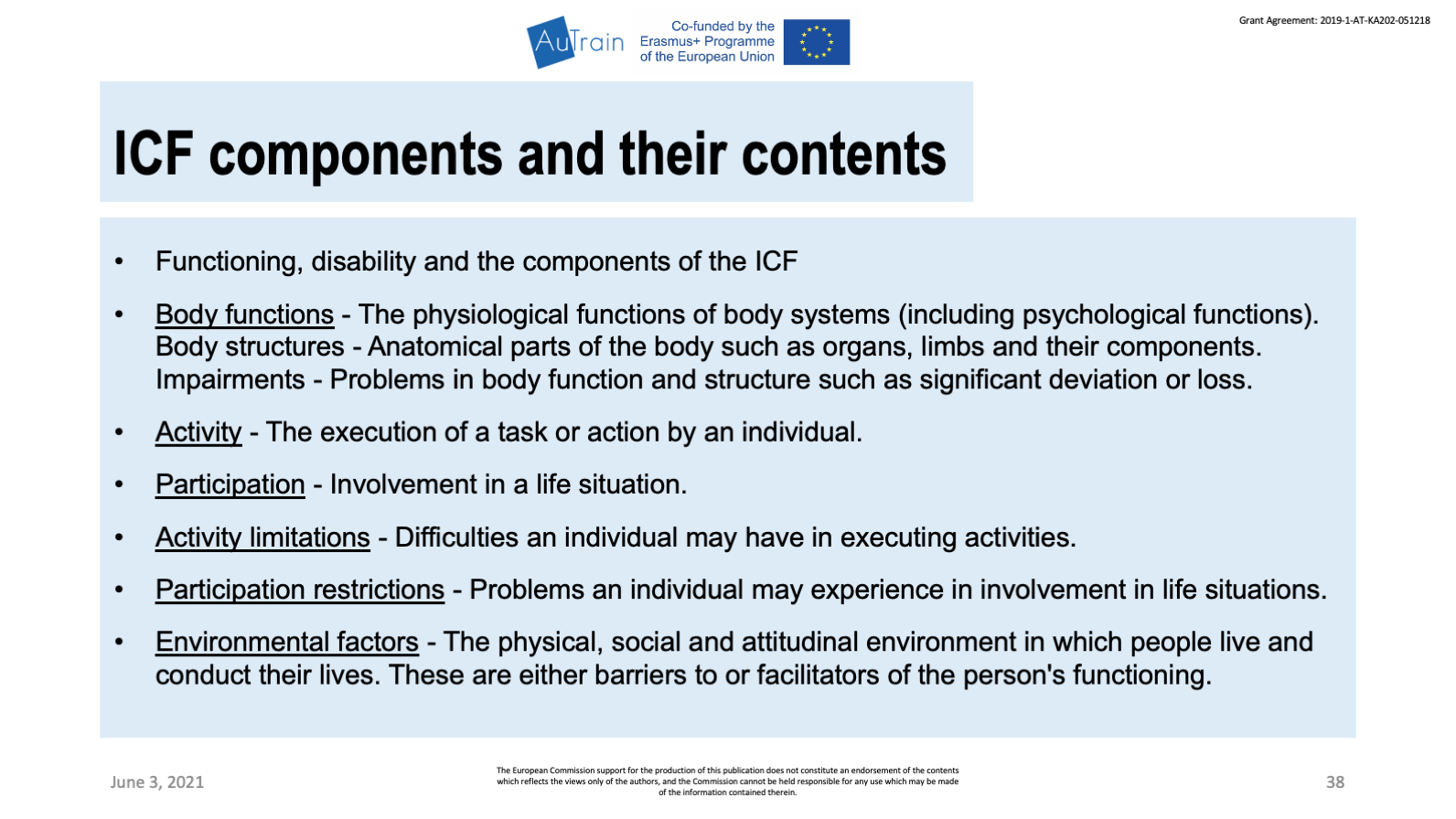
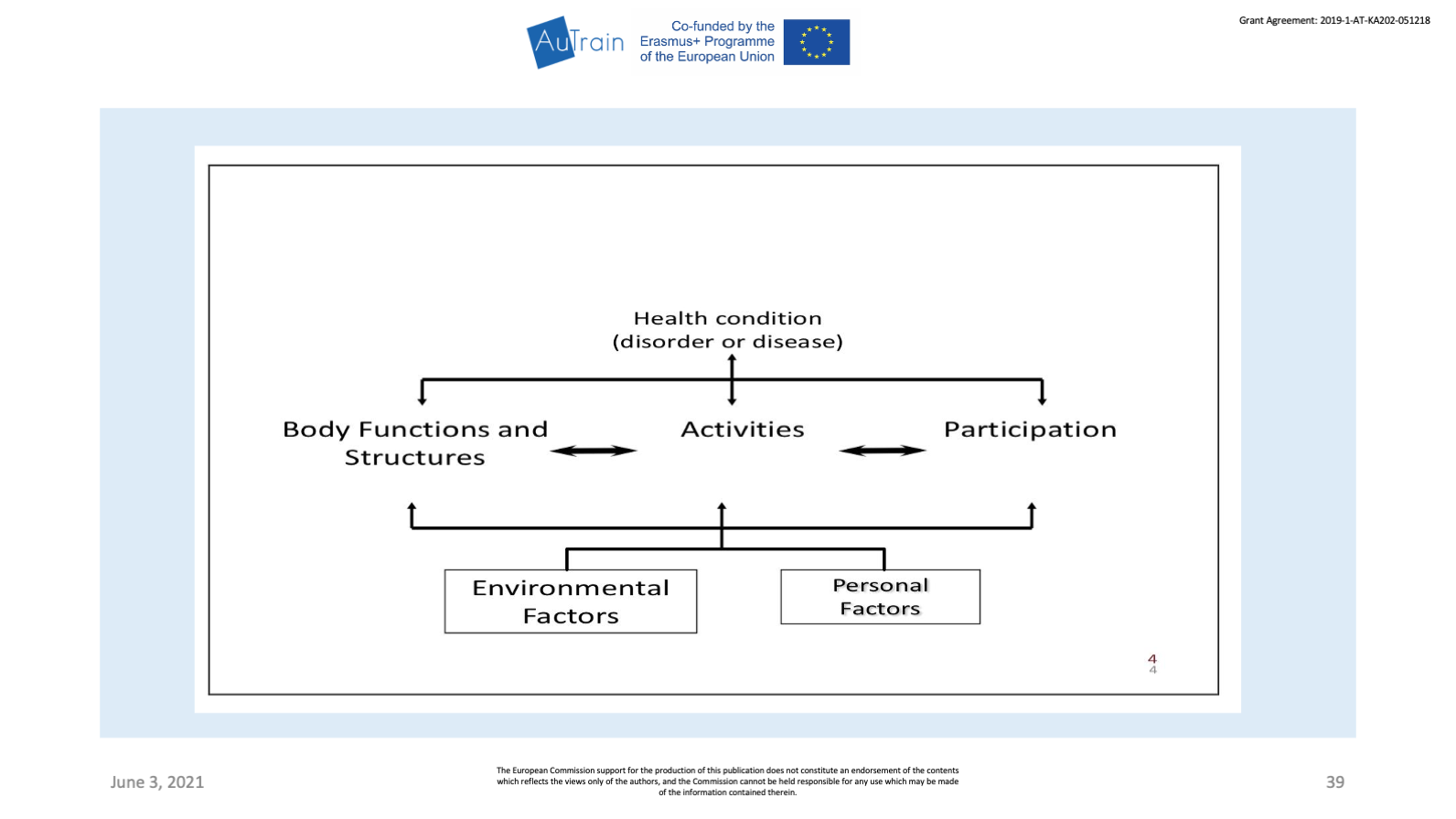
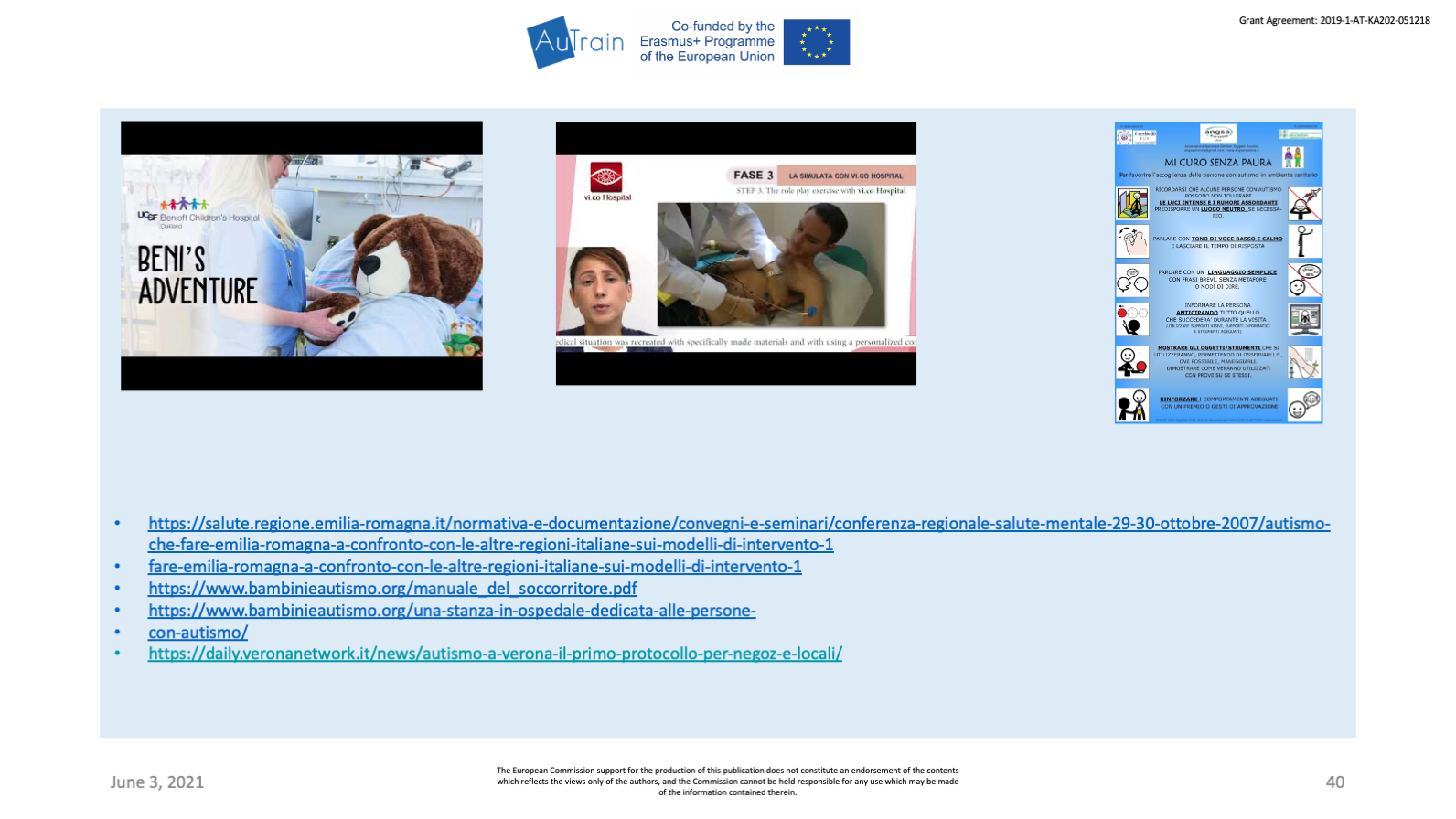
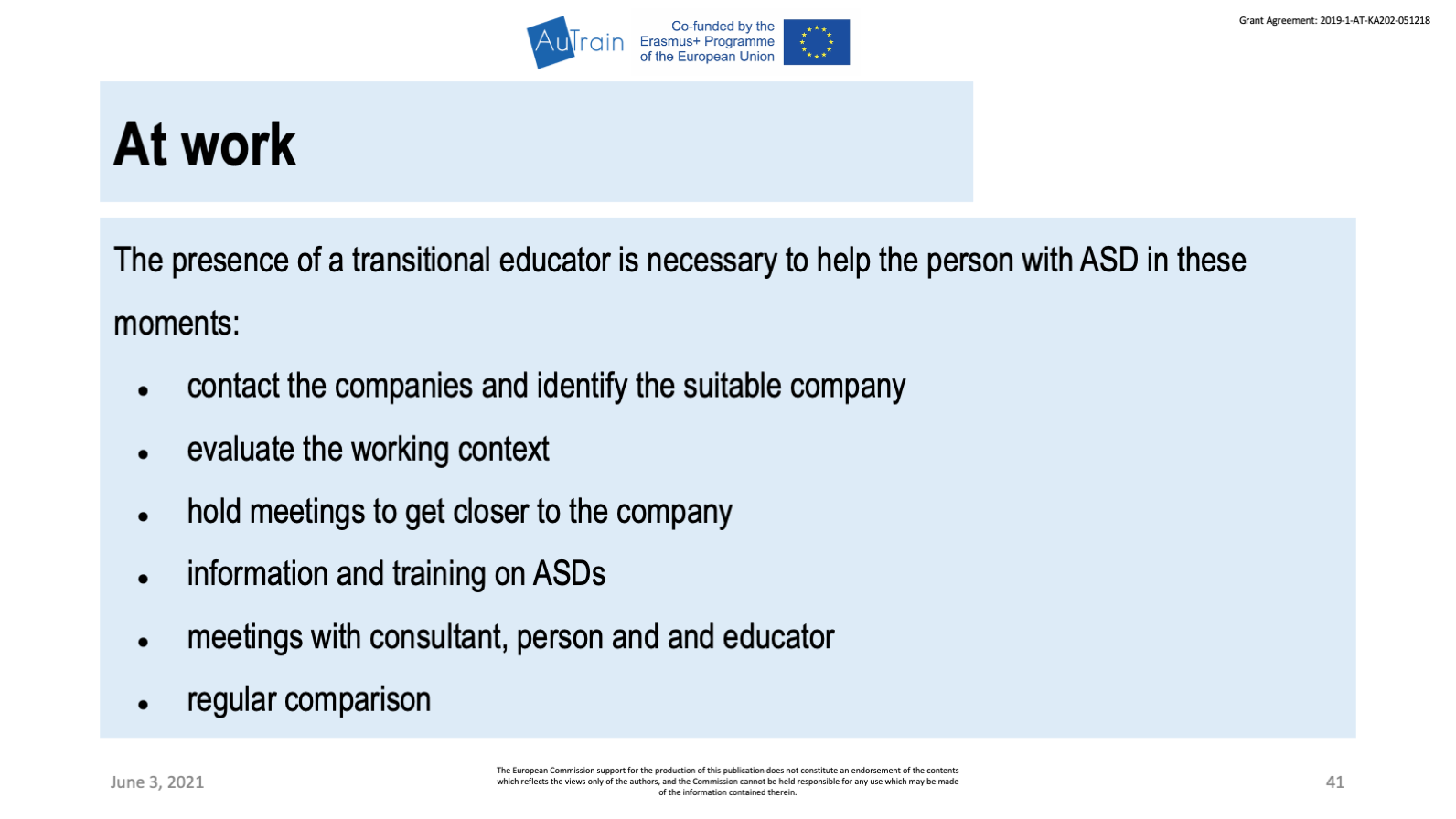
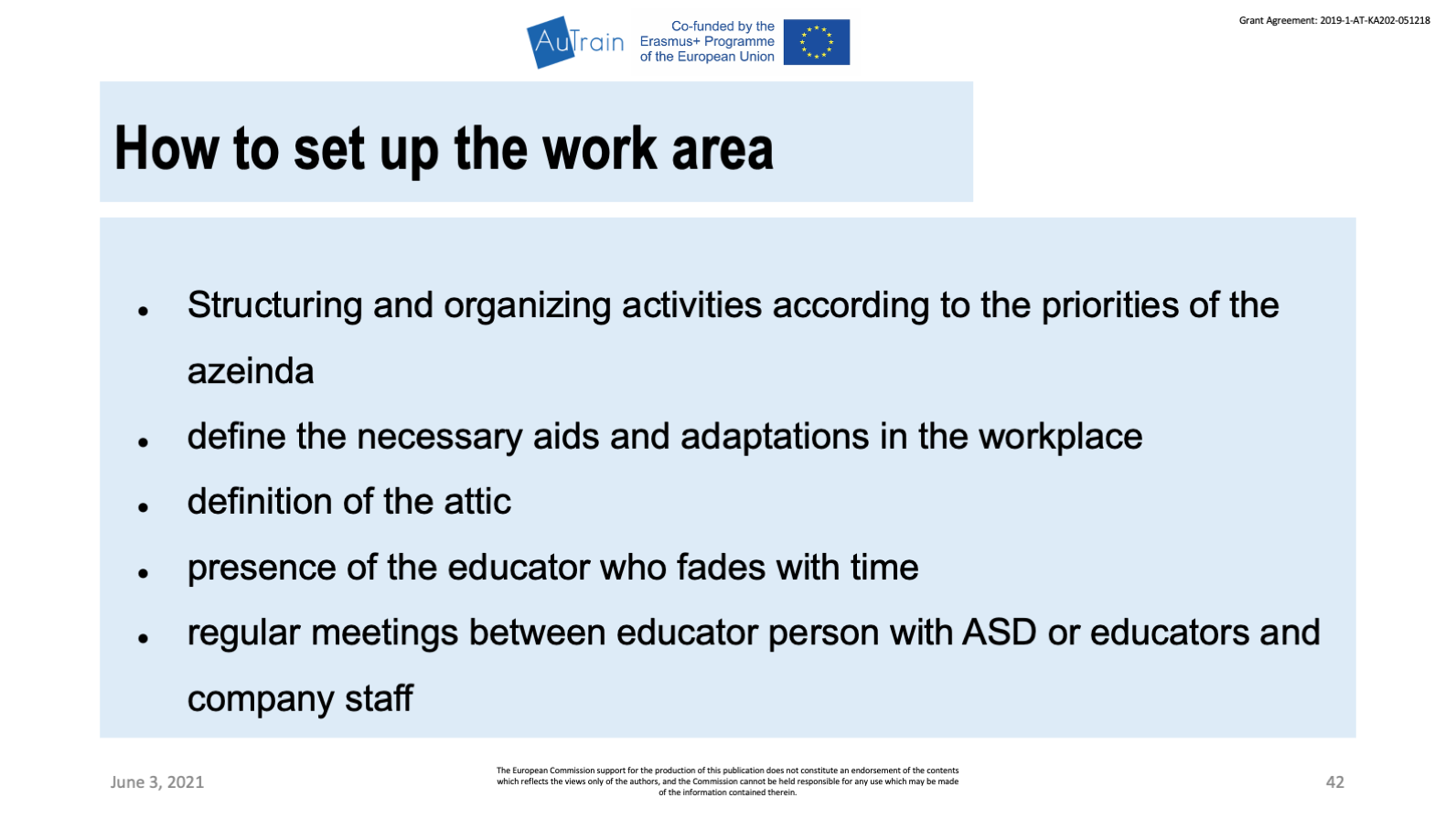
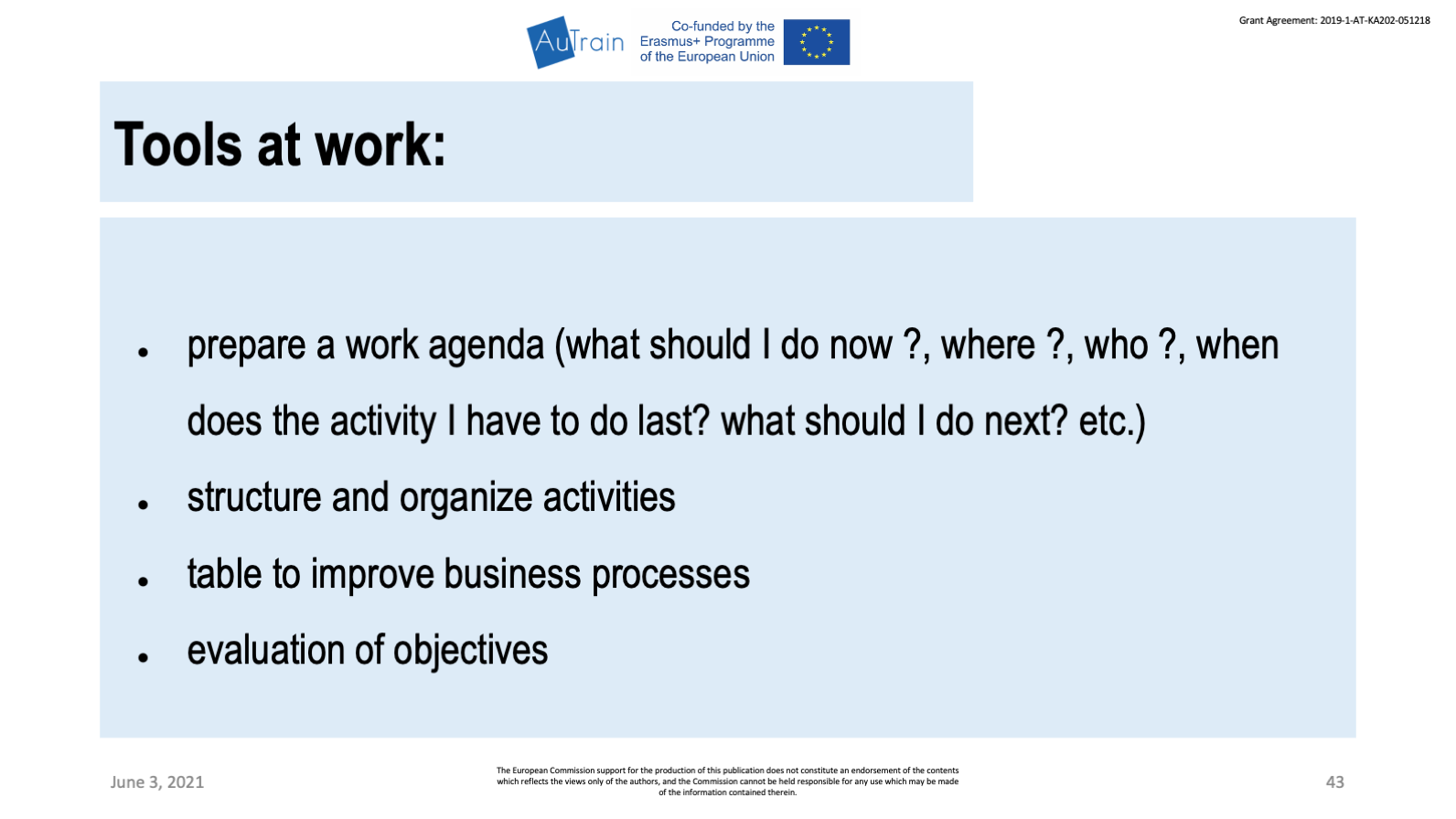
Present slide 27, 28, 29, 30 and then show the video about Bologna’s Airport.
If interesting present slide 40 and show the videos and hospital’s poster.
Present slide 31, 32, 33 and then show the video in the slide 32.
Present slide 34, 35, 36, 37, 38, 39, and then the video about ICF.
Present slide 41, 42 and 43.
#8. Introduce and develop the Activity: teamwork autism friendly society
Note: Present slide number 44 while you are introducing the activity. While participants are developing the activity present slide number 44.
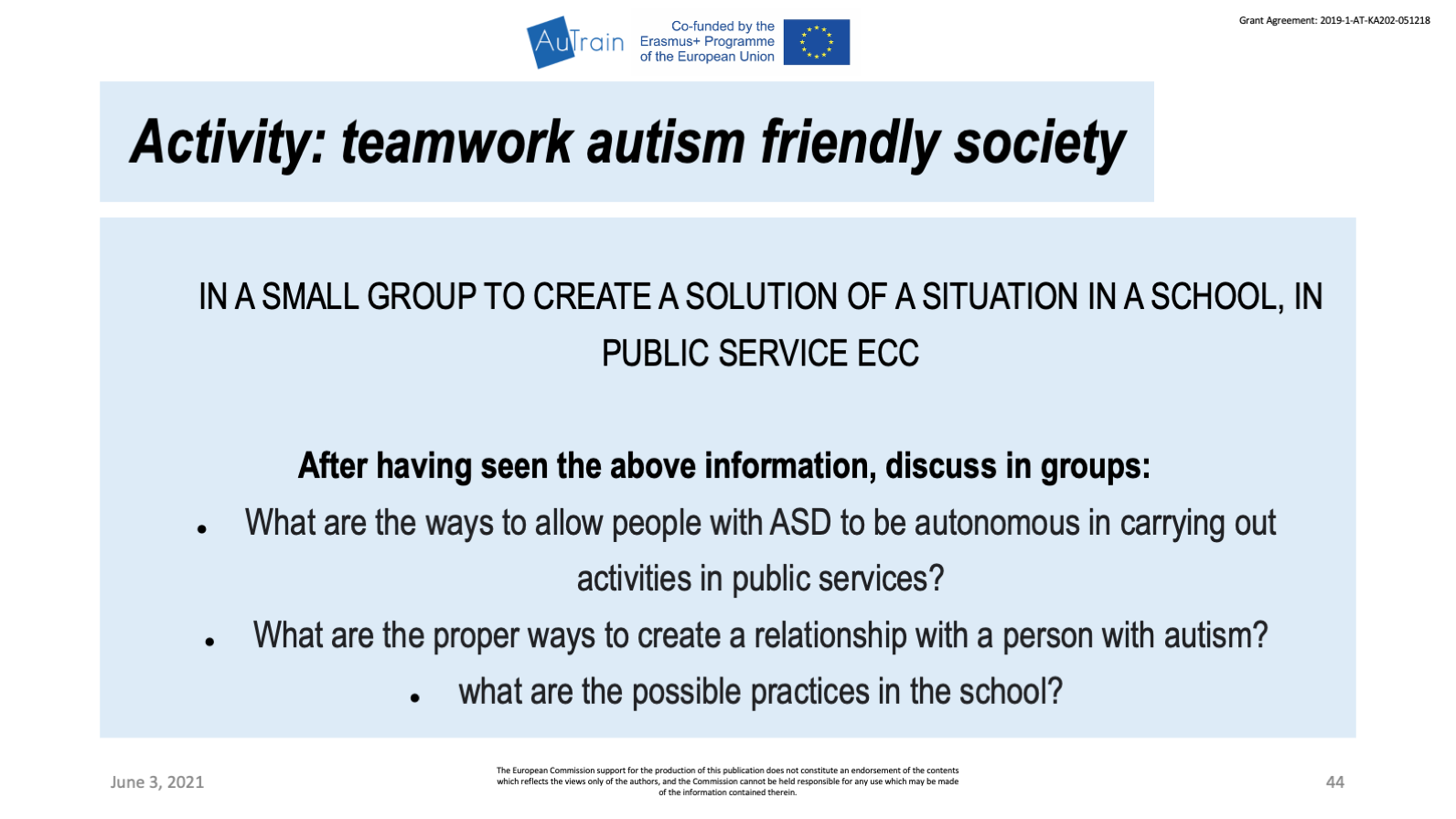
Introduce the aim of the activity
This activity to introduce to discuss related to make an autism friendly society and how to help person with ASD in a school, family, public service and work.
Procedures
Divide the group into small groups. Each group will have to recreate a real situation in a school, in public service or at work with a person with autism. After answering the questions.
Questions/Discussion Topics:
1) What are the ways to allow people with ASD to be autonomous in carrying out activities in public services?
2) What are the proper ways to create a relationship with a person with autism?
3) what are the possible practices in the school?
